



NOVEMBER 2025





NOVEMBER 2025
IN PRINT SINCE 1994
It all starts with an idea. Ideas are important. Ideas stimulate the create mind. Ideas keep us alive . From concept to fruition. Communication and ideas sets us on the path for a very-merry journey. —-HCB
Interview with Lindy Smith Photographer ... 8
Interview with Mary Ann Palermo Jazz Vocalist / Songwriter / Performer
International Recording Artist & Grandmother
Photography by Lee Everett and Sam Backhaus Photography ...18
Interview with Lori Bradley
Painter: Alternative Realism ... 26
Richard Britell | FICTION
Valeria and the Ants CHAPTER 6 ... 39
Diaries of Jane Gennaro
Mining My Life .... 40

Publisher Harryet Candee
Copy Editor Elise Francoise
Contributing Photographers
Edward Acker Lee Everett Bobby Miller
Contributing Writers
Richard Britell Jane Gennaro
Third Eye Jeff Bynack
Distribution Ruby Aver

CALENDAR / ADVERTISING
EDITORIAL / SUBSCRIPTIONS — 413-645-4114
EMAIL: ARTFULMIND@YAHOO.COM
Read every issue online: ISSUU.COM and YUMPU.COM / instagram
Join the FB group: ARTFUL MIND GALLERY for Artful Minds 23 THE ARTFUL MIND PO Box 985, Great Barrington, MA 01230
FYI— Disclaimer: : ©Copyright laws in effect throughout The Artful Mind for logo & all graphics including text material. Copyright laws for photographers and writers throughout The Artful Mind. Permission to reprint is required in all instances. In any case the issue does not appear on the stands as planned due to unforeseeable circumstances beyond our control, advertisers will be compensated on a one to one basis. All commentaries by writers are not necessarily the opinion of the publisher and take no responsibility for their facts and opinions. All photographs submitted for advertisers are the responsibility for advertiser to grant release permission before running image or photograph. Not responsible for photo content /copyright brought into magazine by other artists promoting other artists in editorial on these pages.


Burma Ruby band 22kt / mixed gold bands
COMMISSION ORDERS WELCOMED
www.JoaneCornellFineJewelry.com 9 Main St. Chatham, NY

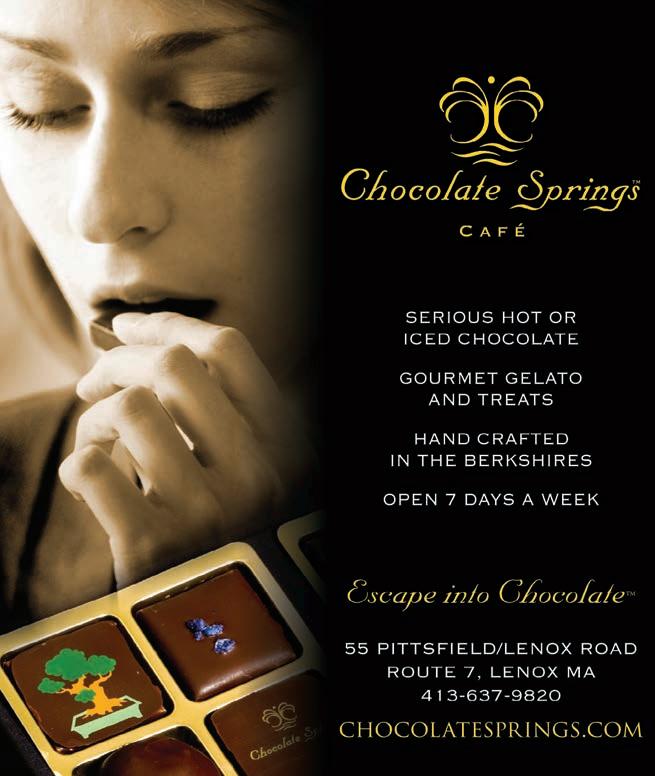
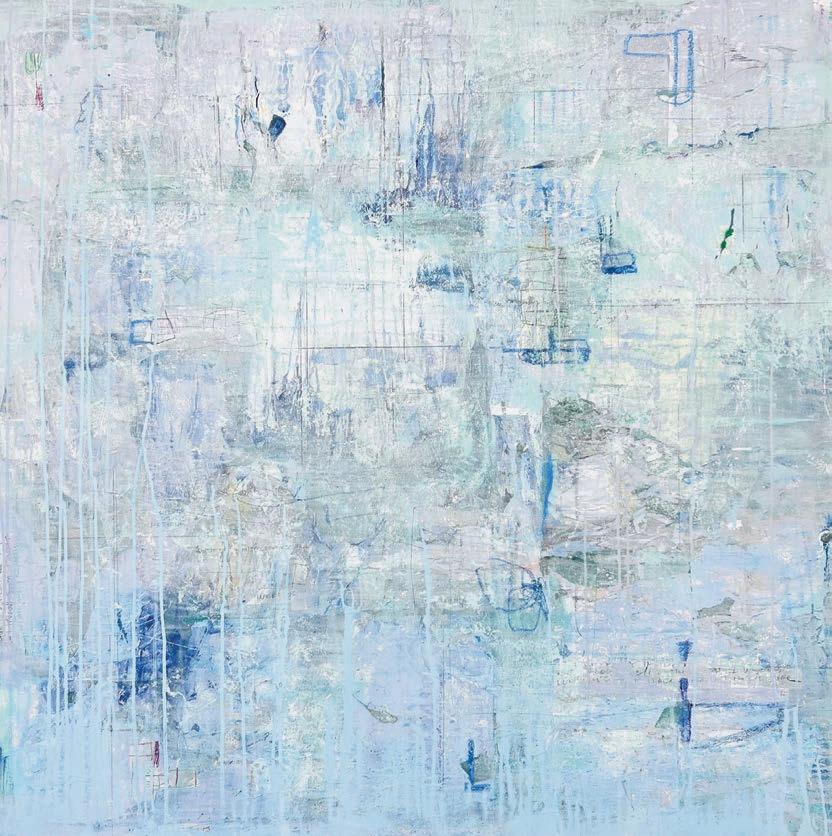
“Enchantment” 48”x 48” mixed media on canvas.
"As an abstract artist, I search for ways to represent the invisible, subtle, and unexpressed. I am driven to lay out fleeting and intangible experiences on physical surfaces.”
Erika Larskaya Studio at 79 Main St. Torrington, CT www.erikalarskaya.art


510 WARREN STREET GALLERY
510 Warren st, Hudson NY 518-822-0510 / 510warrenstgallery@gmail.com
9 Glendale Rd, Stockbridge, MA
Shine a Light: The Art and Life of Deb Koffman Through June 7, 2026
Deb Koffman (1956–2021) was an artist, author, and mindfulness advocate whose vibrant, text-based works combined wit, compassion, and visual warmth. Born in Binghamton, New York, she settled in the Berkshires in 1988— a move that marked a turning point in her life and creative practice.
Thru Nov 2: “MORE”: Anna Cypra Oliver paintings
ART ON MAIN
Main St, West Stockbridge, MA
Thru Nov 30: Plein Air Exhibit; Dec 4-28, Reception Dec 6: Holiday Small Works Show
BECKET ARTS CENTER
7 Brooker Hill Rd, Becket , MA 413-623-6635 office@becketartscenter.org
Sean McCusker: Live Painting Demo: Nov. 9, 16, 23 & 30 @ 1pm
BERKSHIRE BOTANICAL GARDEN
5 West Stockbridge Rd, Stockbridge, MA 413-298-3926 BerkshireBotanical.org
Thru Nov 30: Flock: Watercolor Paintings by Robin Crofut-Brittingham
BERNAY FINE ART
296 Main st Gt Barrington, MA 413-645-3421
Thru Nov 30: Two To Tango Two; Holiday Show opens Dec 6 and run thru Jan 18.
CARRIE HADDAD GALLERY
622 Warren St, Hudson, NY info@carriehaddadgallery.com
Thru Nov 16: Objects of Affection; Nov 21 - Jan 18: Landscape Exhibit
THE CLARK ART INSTITUTE
225 South St, Williamstown, MA 413-458-2303
Nov 22 - May 31, 2026: Raffaella Della Olga: Typscripts; Dec 20 - Mar 8, 2026: Shadow Visionaries: French Artists Against the Current, 1840-70
CLOCK TOWER ARTISTS’ STUDIOS & GALLERY
75 S. Church St, 3rd fl, Pittsfield, MA clocktowerartists.com
A collective of working artists, see website for artists and open studio visits.
FUTURE LAB(S) GALLERY
43 Eagle St, North Adams, MA
Nov 7-29: Reception: Nov 7, 6-8pm: Dawn Nelson: Stories and Artwork inspired by Ancestors from Family, Friends and Neighbors, ‘All In The Same Boat” Talk: Nov 23, 2-3pm. Closing Nov 29, 6-8pm.
GALLERY 13 1/2
13 1/2 Grove St, Adams, MA
Grou Exhibit displaying the creative work of over 17 artists who support and collaborate with The Old Mill Center by using upcycled materials in their work.
GALLERY NORTH
9 Eagle St, North Adams, MA
413-663-1509
Nov 1-29, Nov 7, 5-7pm: Carlos Caicedo and Ann Scott
GREYLOCK GALLERY
71 Sprig St, Williamstown, MA
413-884-6926
Oil paintings, landscapes and whimsical metal sculptures-traditional and contemporary art.
HOADLEY GALLERY
2 Church St, Lenox, MA
Contemporary fFine art and handcrafted objects
JD LOGAN FINE ART
Monterey, MA
Thru Dec 31: By appointment only studio visits: Abstract Creations made with acrylics and mixed media on both canvas and wood panels.
LAPIN CONTEMPORARY
60 Roberts Drive, Studio 308, North Adams, MA
Contemporary works of art
LAUREN CLARK FINE ART
684 Main St, Gt Barrington, MA
Lauren@LaurenClarkFIneArt.com
Fine art, glass, sculpture and paintings
MAD ROSE GALLERY
3 Main St, Millerton, NY (Main Gallery) Thru Dec 31: Through A Lens, A Painting: Lorenzo Minoli.

510 WARREN STREET GALLERY
510 Warren St, Hudson, NY
Sun Stroke: New works by Peggy Reeves
November 7-30, 2025
Reception: Saturday, November 8, 3-6pm
MASS MoCA
1040 MASS MoCA WAY, Hunter Center, North Adams, MA info@massmoca.org
Thru Jan 4, 2026: Dirty & Disorderly: Contemporary Artists on Disgust.
MCLA GALLERY
375 Church St, North Adams, MA
Thru Jan 4, 2026: Ecologies of the In\Between
NORMAN ROCKWELL MUSEUM
9 Glendale Road, Stockbridge, MA 413-298-4100
Nov 8-April 6, 2026: Jazz Age Illustration
SANDISFIELD ARTS CENTER
5 Hammertown Rd. Sandisfield, MA
sandisfieldartscenter.org / 413-258-4100
Oct 18-Dec 7: UNVEILING: Group show featuring artists working with portraiture across a range of mediums and looks at the ideas of portraiture as more than a reprentation of physical likeness, but more deeply into an inner world
SHANY PORRAS VISUAL ARTIST
Hancock Shaker VIllage, Laundry and Machine Shop 1843 W Housatonic St, Pittsfield, MA
Thru Nov 30: Solo Show: Simple Gifts: VIsual Translations of Shaker Hymns and Copland Music
SOHN FINE ART
69 Church St, Lenox, MA 413-551-7353 info@sohnfineart.com
Thru Jan 12, 2026: The Color of Memory: Valdo Bailey, John Clark, Richard Alan Cohen, Yvette Lucas
SOUTHERN VERMONT ARTS CENTER
860 SVAC Drive / West Rd, Manchetser VT SVAC.ORG
Through January 4, 26: Into the Abstract: Paul Gruhler and Neha Vedpathak
SPENCERTOWN ACADEMY
790 Rte 203, Spencertown, NY
Nov 15 - Dec 7: Curator as Artist IV
SUSAN ELEY FINE ART
433 Warren St., Hudson, NY
Thru Oct 30: Do You Hear Me-One Day We Will Fly Susan Lisbin & Sasha Hallock

2 Harris St., West Stockbridge, MA
Saturday November 29, 7:30pm
Klezmer Night with Itay Dayan and his Band

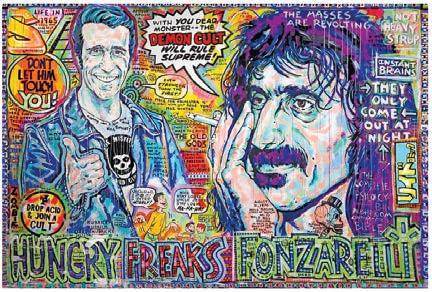
Rob Zombie, Hungry Freaks, Fonzarelli, 2020
MORRISON GALLERY
60 North Main St, Kent CT
Through November 16, 2025
Artist Rob Zombie “WHAT LURKS ON CHANNEL X?”
TIVOLI ARTISTS GALLERY
60 Broadway, Tivoli, NY
Reception Nov 22, 5-7pm: Holiday Show and Sale
THE WIT GALLERY
27 Church St, Lenox MA
Contemporary Fine Art and Sculpture
ASTON MAGNA FAMILY DAY!
St. James Place
352 Main St, Gt Barrington, MA
Dec 13, 3pm: Aston Magna Music Festival‘s FREE Family event for young people of all ages; Dec 14: 3pm: In Dulci Jubilo: Traditional and contemporary acappella carols by Bach, Rachmaninoff, Lauridsen, Randall Thompson and others.
CLOSE ENOUNTERS WITH MUSIC
Mahaiwe Performing Arts Center
14 Castle St, Gt Barrington, MA
Dec 15, 4pm: Vivace Chamber Orchestra
DREAM AWAY LODGE
1342 County Rd, Becket, MA Nov 22, 8pm: Jude Roberts, writes and performs folk songs.
HUDSON HALL
327 Warren St, Hudson, NY hello@hudsonhall.org Nov 15, 7pm: Natalie Merchant with Erik Della Penna
MAHAIWE PERFORMING ARTS CENTER
14 Castle St, Gt Barrington, MA
Nov 15, 8pm: Dan Tyminski Band, Bluegrass
MASS MoCA
1040 MASS MoCA WAY, Hunter Center, North Adams, MA info@massmoca.org
Nov 22, 8pm: Maddie Winer
RACE BROOK LODGE
864 S Undermountain Rd, Sheffield, MA
Nov 14, 8pm: BeauSoleil Avec Michael Doucet
SANDISFIELD ARTS CENTER
5 Hammertown Rd, Sandisfield, MA
Nov 28: 4pm: Special Concert: Josh Luxon-Robinson Returns.
STOCKBRIDGE CHRISTMAS CONCERT
Dec 20 at the First Congregational Church
4 Main St, Stockbridge, MA
STUDIO 9
Nov11, 7pm: Omar Sosa: Quarteto Americanos Live Concert Recording Event (Night 1) Featuring Josh Jones, Sheldon Brown, and Ernesto Mazar Kindelán
TANGLEWOOD
297 West St, Lenox, MA
Nov 14, 7pm: TLI Presents: Catalyst Quartet performs “Cinematic Refuge”; Nov 28: TLI Jazz: Ted Rosenthal Trio with Special Guests – Classics Reimagined; Dec 19 /20, 7pm: TLI Presents: BSO Brass
BERKSHIRE ART CENTER
13 Willard Hill Road, Stockbridge MA
Make Art, Buy Art! Visual art classes, workshops, events year-round for all ages/skill levels. Shop artwork by local artists, discounted art supplies, books
CLARK ART INSTITUE
225 South St, Williamstown, MA
Nov 5: Works on Paper Highlights Talk, Free series Nov 19: Clark Art’s Collage Club
HOLIDAY CANDLE MAKING WORKSHOP
160 Forrest Park Ave, Adams, MA
Nov 9, 12-2pm: Coconut Soy wax using nontoxic aromas all the while decorating with festive wax melts
MAD ROSE GALLERY
3 Main St, Millerton, NY info@madrosegallery.com
Nov 6, 6pm, 13 & 20: Sandipity/Words of Beauty Workshop: Your Story In A Unique Form, with Artist Fedora Maier
NORTH ADAMS CLAY
189 Beaver St, Beaver Mil, North Adams, MA northadamsclay.com
Classes and workshops on the website
VENTFORT HALL MANSION & GILDED AGE MUSEUM
104 Walker St, Lenox, MA
Nov 9: Astrology Workshops; Nov 16: Introduction to Tarot Card Reading Workshops
CLARK ART INSTITUTE
225 South St, Williamstown, MA
6pm: 11/06: The Hitch-Hiker (1943) 11/13: The Sweet Smell of Success (1957) 11/30: Pickup on South Street (1953) 12/04: Leave Her to Heaven (1954) 12/11: Kiss Me Deadly (1955) 12/18: The Third Man (1949)
IMAGES CINEMA
50 Spring st, Williamstown MA 413-458-1039 imagescinema.org
Nov 7-13: Blue Moon
TSL TIME & SPACE LIMITED
434 Columbia St, Hudson, NY fyi@timeandspace.org
Nov 16, 1pm: Met Opera in HD: Giacomo Puccini’s LA BOHEME (encore); Nov 29, 7pm: National Theatre of London / NT Live:The Fifth Step

Calendar listing submissions artfulmind@yahoo.com
Read current and past issues on ISSUU.COM
YUMPU.COM
Visit: FB Instagram
Hard copies available at your favorite shop
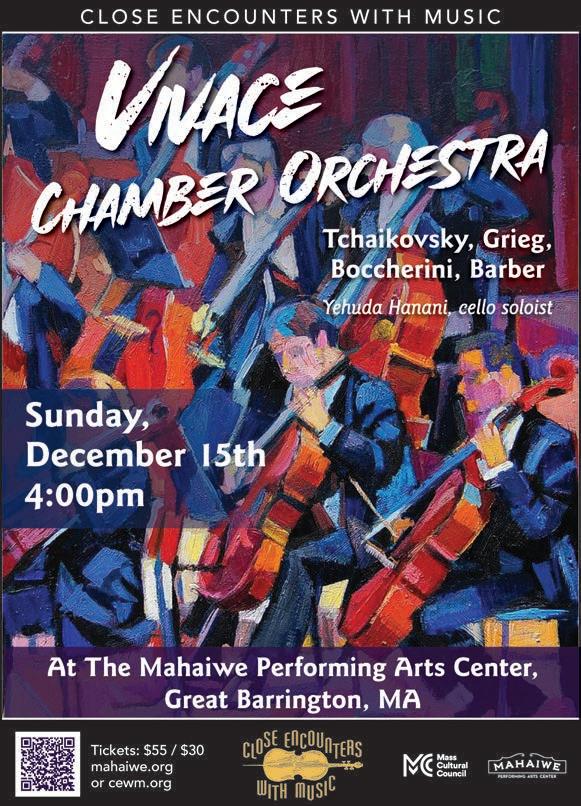
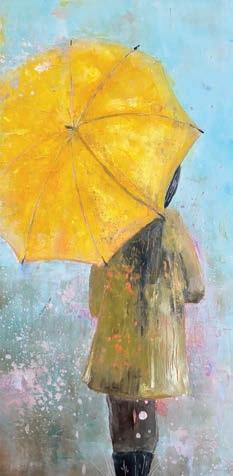

Sheffield Farm Road, Oil on canvas, 20” x 24”
Painting classes on Monday and Wednesday Mornings 10-1pm at the studio in Housatonic and Thursday mornings 10am - 1pm out in the field. Also available for private critiques. Open to all. Please come paint with us!
Gallery hours: Open by chance and by appointment anytime 413. 274. 6607 (gallery) 413. 429. 7141 (cell) 413. 528. 9546 (home) www.kateknappartist.com Front Street, Housatonic, MA


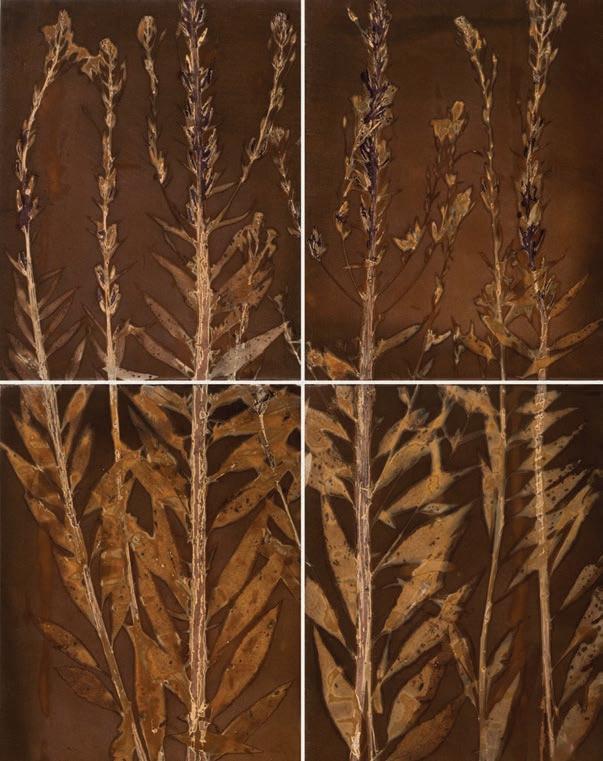
“I am an artist in spite of myself.” LS
Photographs courtesy of the Artist
I first met Lindy years ago at her photography studio in Housatonic, MA, where she introduced me to the intricate process of platinum printmaking. This experience deepened my appreciation for her art. As a meaningful gesture of our friendship, she gifted me a print that featured a hand-brushed border that authenticates the platinum process and the image of a rusty big-ol’automobile. Lindy now lives in her home state of Iowa. The impact of her work continues to resonate with me.
Lindy is set to visit the Berkshires, where she will bring her latest book, "Leaves and Light: Sunprints of American Native Plants" (Prospecta Press), available at The Bookstore in Lenox, MA. She will be signing copies on November 29th. In her book, she chronicles her journey with historic printing methods, having collected plants from her property to create sunprints on sensitized papers coated with platinum or palladium. This collection showcases her works over the last 25 years.
Lindy will be visiting the Berkshires in November and introducing her latest book.
Lindy, can you explain your chosen quoted words: “I am an artist in spite of myself.”
There have been long fallow periods in my creative life. At Bennington College, photography studentsof which I was one- were excluded from the art department. I was negatively influenced by that for years. Since my documentary work couldn’t be considered art, it must not be of value, so was boxed up and shoved under the bed. After college I channeled my creative energy into making props for window displays and doing interior design, always skirting around the issue: my inability to make the leap to thinking of myself as an artist.
Your photography has shifted directions from documenting American ranch life to focusing on nature, specifically the various aspects of native plants. What sparked your interest in this new direction?
In 1992 I was witness to something that changed my life. I tagged along to a three-day horsemanship clinic in Wyoming being given by the great horse-
man Buck Brannaman (the Horse Whisperer). This was long before Buck became famous, and the students were local ranchers and their kids. I was immediately fascinated. I began taking pictures again and didn’t stop for ten years. I started riding and participating in clinics with Buck and his early mentor, Ray Hunt. I traveled around the West getting to know ranching families and the Western way of life. It was like a very extended boot camp, terrifying and humiliating, exposing myself as a greenhorn in front of folks who had grown up in this way of life. But I kept at it and paid attention. It was a great lesson in authenticity. I gradually earned the respect of horse people who became dear friends. I later realized that among the myriad of things I was learning from them, one of the most important was overcoming fear and to not quit. I was able to introduce myself as a photographer, although I still couldn’t utter the word artist.
A couple of years later I visited a gallery in Santa Fe that specialized in 19th century photo processes. Seeing some of that work, I instantly wanted to do


it myself. The evocative dreamy tonal quality of the images spoke to me. I taught myself some of those early processes and learned to make enlarged negatives for contact printing. For a few years I tried to follow accepted rules for how those images should look. But as I began to stray from those rules, I started to feel much more creative.
By 1998, my work had been taken on by that Santa Fe gallery and later a gallery in New York. In 2000 I was approached by a publisher about doing a book of some of the Western work. The publishing experience was not a happy one for me. When the book came out, I was devastated by the poor production quality. I felt this would disappoint the people who had trusted me enough to have their lives made public. The book still has diehard fans but at the time I felt I needed to step away from my camera.
Shortly before this, my then husband and I had purchased a run down farm across the road from Massachusetts. It had been abandoned for a number of years and the pastures were very overgrown. I was spending more time at home and started exploring
the property with the dogs and horses. One day I had an epiphany: I was surrounded by really interesting plants. I wanted to know more about them. In learning more about them I wanted to make images of them. But not with a camera. I soon realized this would be my next project and that I could begin right outside my door. Believe it or not I had not at that time heard of Anna Atkins, the 19th century British amateur scientist and photographer who made images of seaweeds under sunlight. But somehow I found my way to printing those interesting plants outside in 19th century fashion- the sun as the light source, the plant as the negative.
Tell us about some of the ways your perception of beauty has evolved, particularly through the use of sunprints, different papers, and the various techniques you have explored along the way? When I first began making the plant images, I was programming myself to make traditional looking botanical prints: usually a formal composition with one recognizable plant. But as I went deeper into the
project the work became more experimental. I played around with different chemical mixes and tried out many different papers: cotton, linen, handmade, French, Italian, English, Japanese. I was beginning to realize that often the prints I was happiest with were less technically perfect. This was a huge step forward for me. I was finally able to stop analyzing the work by traditional standards; the judgmental voices were gone from my head. I was starting to call myself an artist.
Can you go into the step by step process a bit of what it takes to find a native plant you love and then create a photographic image of it? Initially, I was thrilled by nearly every plant I saw. Each foray was like Christmas. As time went by and I was more educated about what I was looking atnative? Introduced? Invasive?- I became much more selective.
Continued on next page...
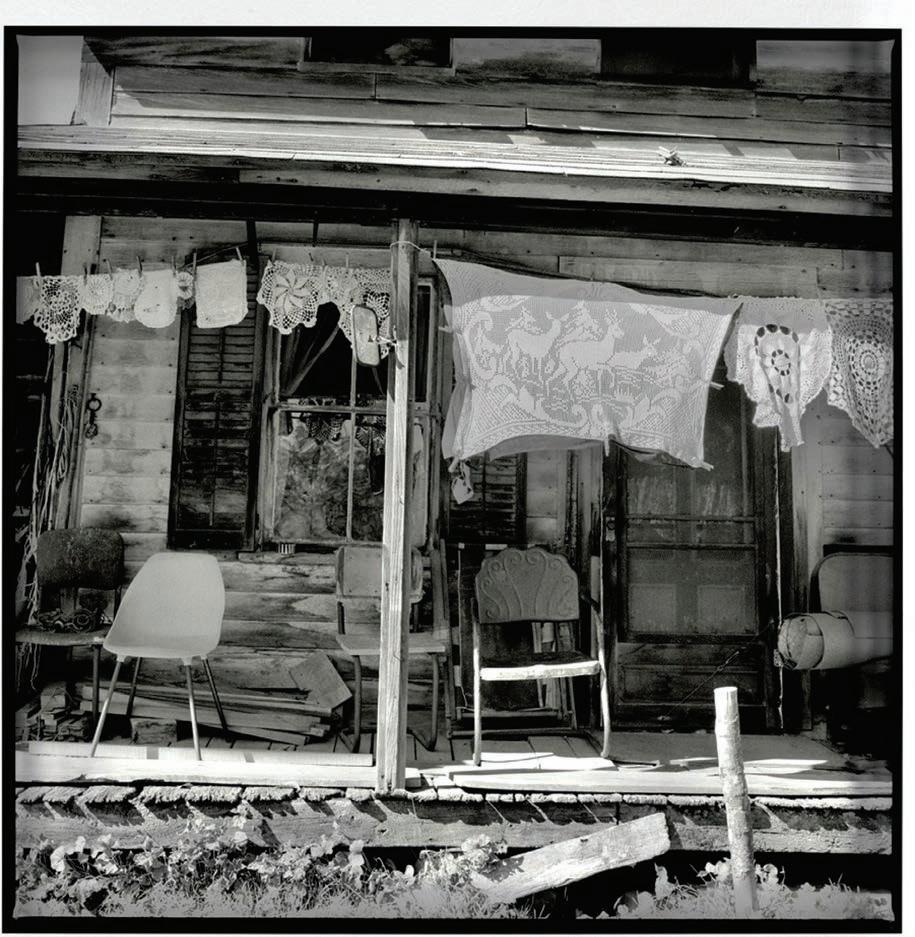
To the point of struggling with disappointment when first visiting a new environment if I didn’t immediately land on a plant I wanted, in the sea of greens. It is hard to say what would ultimately catch my eye- structure? A plant I didn’t recognize, or one I knew and cherished and wanted to revisit?
I am a big fan of those giant blue Ikea bags and would head out with a couple of those to collect, returning to the studio/garage/basement/barn in whatever state- wherever I had been invited to stay. I would pore through the bundles of plants and begin to formulate a plan. I learned early on that many plants have definite opinions about how they want to be portrayed and my compositions in that regard became collaborations. If I had to fight the plant for an image it usually wasn’t a successful one. Once the composition was determined, the paper I had previously coated with the mixed sensitizer was sandwiched with the plant between large sheets of glass- or plexiglass for the largest images, as when I constructed 3 six foot Cyanotype kimonos for an exhibit sponsored by the Des Moines Art Center. It was all lugged outside and placed on trestles for any-
where from under an hour to days. Exposure times were very influenced by humidity, temperature, time of day, time of year. Once I decided the image was fully cooked, it would all come back inside to be developed. I would work at long tables with 8-12 large developing trays set up. If I was at an arts residency, I would often develop at night until 1:00 or 2:00 in the morning. Spaces I worked in often had a lot of windows-or in undeveloped spaces like barns or garages, cracks or doors that wouldn’t close- with light most artists would be happy with. But I was always trying to convert the spaces to have less light. Since Kallitype is a silver based process it is sensitive to light. So I would construct tarp tents in the darkest corner and dry the developed images in those.
What interests you about native plants?
My focus has been on North American native plants, and I have worked with onlya small slice of those among endless species. But generally, I love the fact that they were here long before we were and yet go unnoticed by so many. They are all individuals. Some are showy, some are more humble. They exist
(up to now anyway) whether we notice them or not. Until recently, they have not been intentionally altered by humans. They nourish and shelter countless species of insects, birds and four legged creatures. Knowing that now so many are in danger through development, invasive plant species and climate change is heartbreaking to me. Early on I came to see this work as much conservation oriented as artistic. After seeing images I have made, people often say to me that they will never see plants the same way again. Tom McGuane refers to this in his wonderful preface to the book. They are no longer viewed as weeds but as something precious and memorable and worthy of protection.
I see a connection between photographing slices of life in the Midwest and native vegetation; both evoke a sense of impermanence, transformation, and the passage of time. What connections do you feel strongly about?
Photography for me has always been about connection. My grandfather and father were avid amateur photographers as were family members further back.

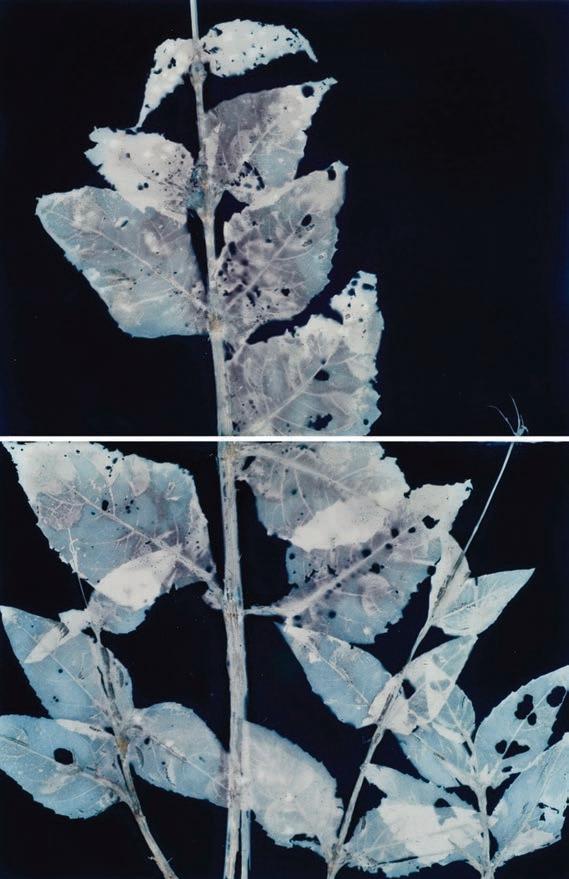
As a kid I was fascinated by those vintage imageswhere and when they were made, the qualities of light and dark and the relationships among the people portrayed. I spent hours with those early images and my parents encouraged my interest by giving me a Brownie camera when I was seven, and my father taught me to develop film. So yes, for me, photography has a lot to do with memory and the inevitable passage of time. Capturing a moment gives us the illusion of control. Something has been preserved- a moment that no longer exists- when someone takes a photograph, and it has weight and importance.
While studying in residency programs and learning about these plants, what valuable information did you bring home and feel prepared to work with?
Residencies are very rarified environments. Your time is completely your own. No one will interrupt you. If you don’t want to stop for meals, they will be delivered to your studio. If you want to work through the night, no one will worry about you. The
gift of time includes a bedroom, staff to prepare your food and keep your room clean and pick you up at the airport if you don’t come by car. Engaging with other residents about their successes and tribulations often made me more clear about mine. Seeing and reading other artists’ and writers’ work in progress is one of the perks; I was at a residency in Wyoming when Liz Gilbert was writing Eat Pray Love. She is a very funny person and kept us entertained with stories from her travels. It was cool to see the book go out into the world and explode in popularity. Returning home to life’s interruptions and obligations was always a shock. Giving workshops with students and speaking to groups sometimes helped me with the transition. And of course, it was exciting to work more in detail with what I had brought home.
Kallitype print is a process based on iron salts and silver, patented in 1889. It is more affordable than platinum or palladium printing. In what instances would you create this kind of print? Once my prints became larger in scale I didn’t do
much platinum printing any longer. I don’t know what the cost is now for a few fluid ounces but even then it was astronomical. Palladium salts were somewhat more affordable but those prints are often indistinguishable in appearance from Kallitypes so it made more sense for me to work in that process. Kallitype is less stable than the other two but offered me a bigger color range and a failed print was less of a tragedy, being less expensive to produce. My biggest concern with Kallitypes was that somehow the images would alter in ultraviolet light on collectors’ walls. But I have left completed images under direct sunlight for months at a time to see if there would be any changes and they remained unaltered so I feel confident they are archivally stable.
Plants left outdoors under glass for up to two weeks are part of a process you engage with, which you find to be “magical.” Can you explain why you feel this way and at what stage of the photography process this occurs?
Continued on next page...



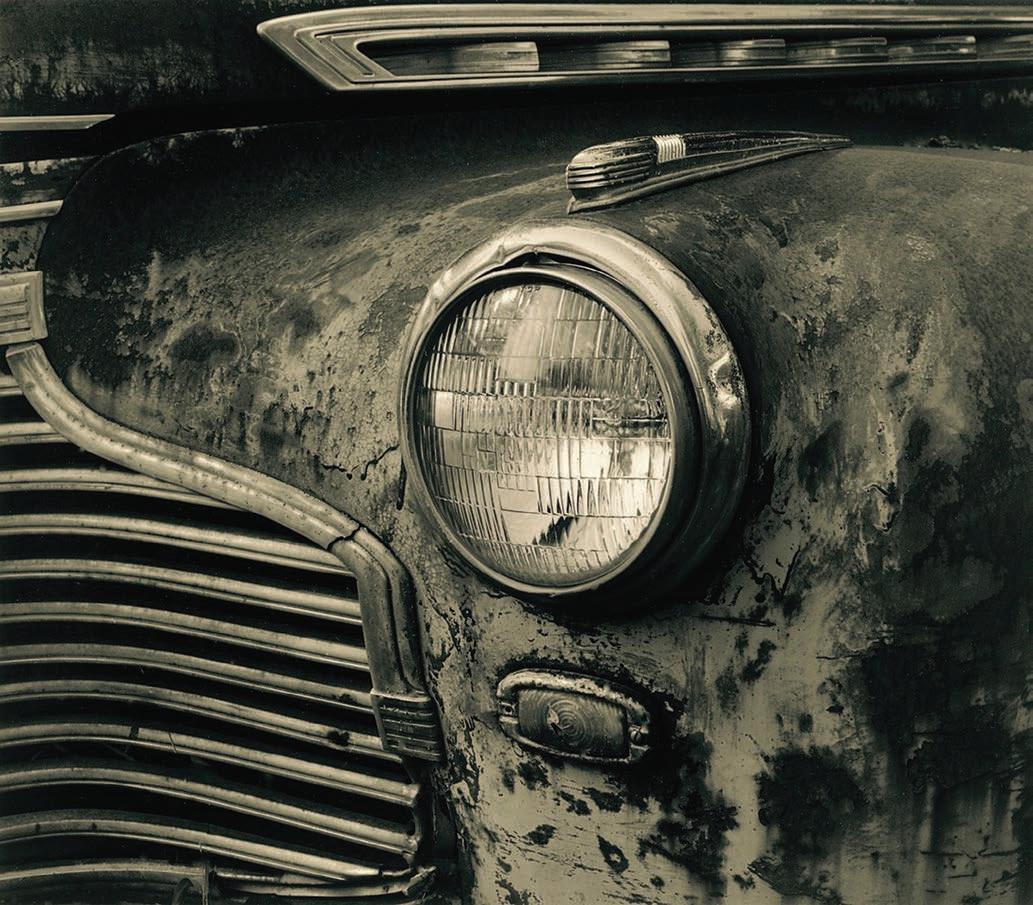
Bringing in an exposed print from outside was always a thrill. I never knew what I was going to see after removing the glass. Sometimes it would be unexpected areas of color, or the plant would have sweated in the heat of the day and created shadows of itself, or there might be interesting scratches where I had moved the plant over the coated surface while composing, or there would be chew marks from bugs on the leaves that I hadn’t noticed before. There were a few instances where I experimented with putting two sheets of identically coated paper with the same type of plant outside then exposed and brought inside at the same time; the images would be radically different. Not much was predictable and that was the magic for me.
When it comes to color in your prints, what do you aim to achieve as a rule of thumb? And what about the other processes you work with?
Aiming to achieve something specific is always a mistake in these processes! I try hard not to be judgmental. I try to remember what the Maharishi said when I learned to meditate: “No expectations, no anticipations.”
I notice that you appreciate the colors of nature, as well as the natural patterns and designs. Wondering, if you ever considered yourself as being a naturalist or scientist?
I would never consider myself a naturalist or a scientist; my knowledge barely skims the surface and I tend to forget what I know! I would say that as the mysteries of plants became more important in my life and I formed emotional attachments to them and shared that with other interested people, I also became more of an artist.
In Iowa, reflecting on your upbringing, can you describe what your childhood was like and what it is like to return there to live now?
I grew up in Western Iowa. My parents were both teachers. When my father wasn’t painting houses in the summers to earn more money (everyone knows teachers don’t make what they are worth), we as a family would go on camping trips around the West: Colorado, Wyoming, Montana, South Dakota. I know this was where I developed my affinity for the West. Our parents would turn us loose to exploreclimb, swim, collect rocks, leaves and pine cones.
One year we rescued a weak and skinny stray kitten we named Blackie for where we found him in the Black Hills of South Dakota. He lived a long and happy life back in Iowa with his BFF, our cocker spaniel Peppercorn Smith, and our rescued mourning dove, Peeper.
We lived in a small town and the school K-12 was a few blocks away. I would walk there with my father before he would veer off to the high school entrance and he would sometimes grill me about the names of trees along our route. In high school one year, my mother enrolled me for ceramics lessons at a nearby university and would drive me there.
I was enamored of raku and the instructor as I remember it used wild grasses for the reduction process. Later, in college, I had a weaving instructor who encouraged me to collect and incorporate wild plants in the weaving I made. All these things certainly became embedded in my memories and influenced where I am now.
Regarding what Iowa is like now: as in so many places, the cities thrive and the many of the rural areas struggle.
Continued on next page...
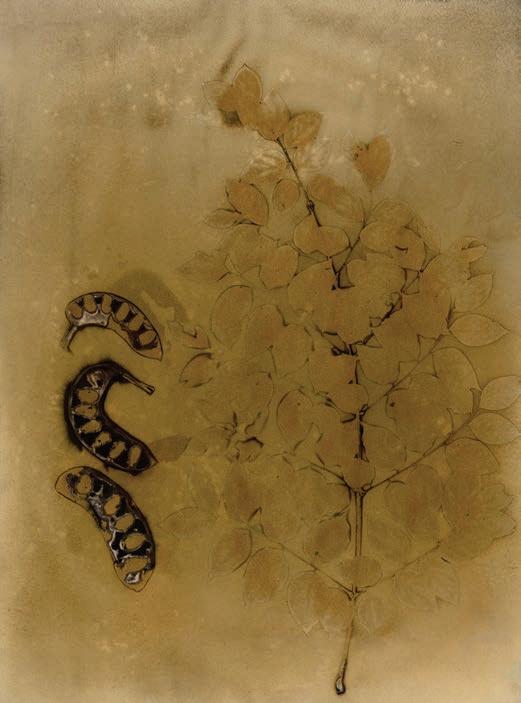



The environment has been massively degraded by industrial agriculture. The prairies and oak savannas that covered the state pre statehood are just a fraction of what they were. But discovered pockets of original prairie remnants are fiercely protected. People are aware of the need to save and add to what is left and there are more and more home gardeners establishing native gardens, as I have, to encourage pollinators of all descriptions. Farmers are doing the same with pollinator strips in crops.
Regarding art and artists here: Mainframe Studios downtown houses over 200 artist studios and is the largest non profit studio collective in the country.
The Des Moines Art Center, which has three connecting buildings, designed by Eliel Saarinen, I.M. Pei and Richard Meier, and showcases exhibits from artists worldwide. There are important pockets of artists throughout the state, many who have come from other states.
I came back to Iowa after over 30 years in the Berkshires, after a divorce and the death of my mother. Neither my father nor I were doing well and
it seemed like a good idea, although it took me years to adjust. Living in New England, I missed the huge skies and the prairie of the Midwest.
But here I miss the Berkshires and the artistic and cultural environment that is sort of absorbed by osmosis, and I still have friendships there that go back decades. I try to get back at least annually and l’m looking forward to the book party Matt Tannenbaum is throwing at The Bookstore in Lenox in November. Joe Wheaton will also be pulling together a slide show of some of the images.
Will you return to studying people, places, and objects in photography?
My home studio has a wall of negatives, most of which have never been printed, including portraits of many Berkshire creatives. I think more and more often about visiting those files of negatives. If I live long enough, I will!
If I don’t, maybe someone will discover them after I’m gone and decide there is important historical material there worth saving.
We will all be waiting to see you back in the Berkshires with your new book.
Leaves and Light is 100 images of American native plants made under sunlight across the country, with a forward by author Tom McGuane. It is available at The Bookstore in Lenox, MA —
And there will be a party Saturday November 29 at 5 p.m.!
My hope is that old friends and acquaintances will stop by to say hello and have a glass of wine.
lindy.smith@gmail.com
lindy-smith-art.com

Jane Gennaro is an artist, writer, and performer based in New York City. Jane’s work has been widely exhibited, performed, and broadcast. She has been featured in the New York Times, New York Magazine, and NPR among others. Her illustrated column, "Mining My Life” appears monthly in The Artful Mind magazine. Jane’s art studio is in Claverack, NY.
Jane Gennaro — www.janegennaro.com shop.janegennaro.com https://performingartslegacy.org/
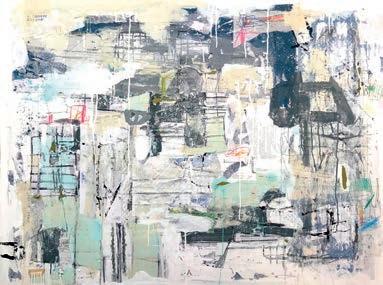
Confinement and Breakaway examine the mental state of struggle to make sense of our environment, both physical and psychological. I incorporate childlike drawing to represent nonconformity; the unadulterated state before we get confined by rules, commitment, insecurities, and other “add-ons.”
“I distress and repair parts of the painting, as we do within ourselves. The drawings of floor plans and elevations, which I use as a starting point, create a sense of enclosure, which I expand by continuing the lines outward, breaking the structural pattern. This alters the sense of confinement, breaking away from the [rigid, static] norm”.
Erika Larskaya — https://www.erikalarskaya.art
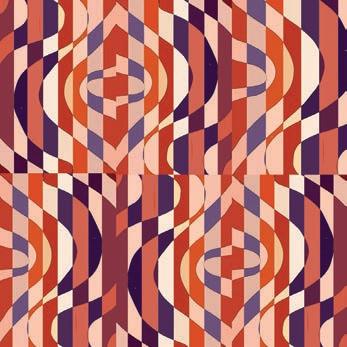

Art is therapy for me. A good way of processing my own personal baggage. I illustrate, in detail, whatever particular ism that I am dealing with. It helps me to see it and give it a face, so to speak. But the nature of it is too personal to share openly, so I obscure it until it is no longer discernible. I know it's there, but only I know. It's very cathartic!
Richard Nelson — nojrevned@hotmail.com
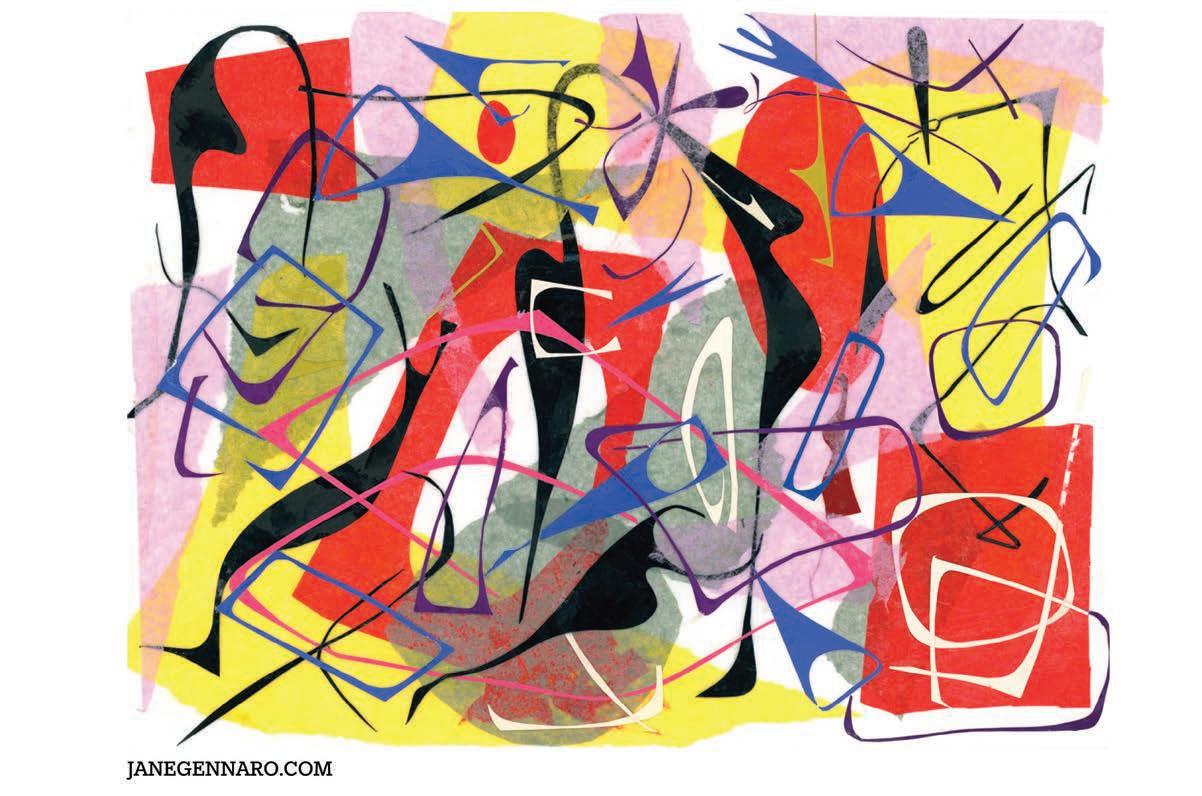
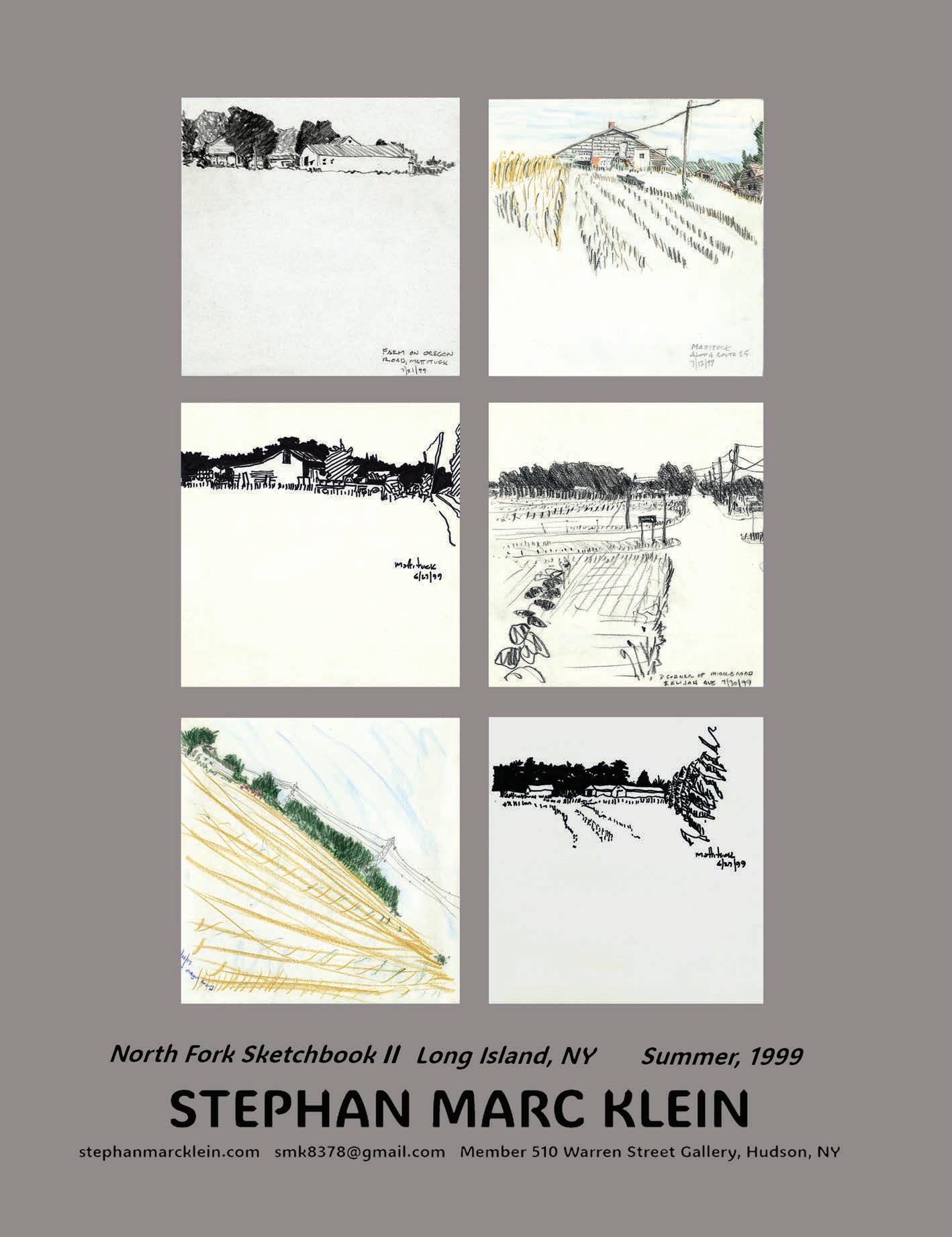
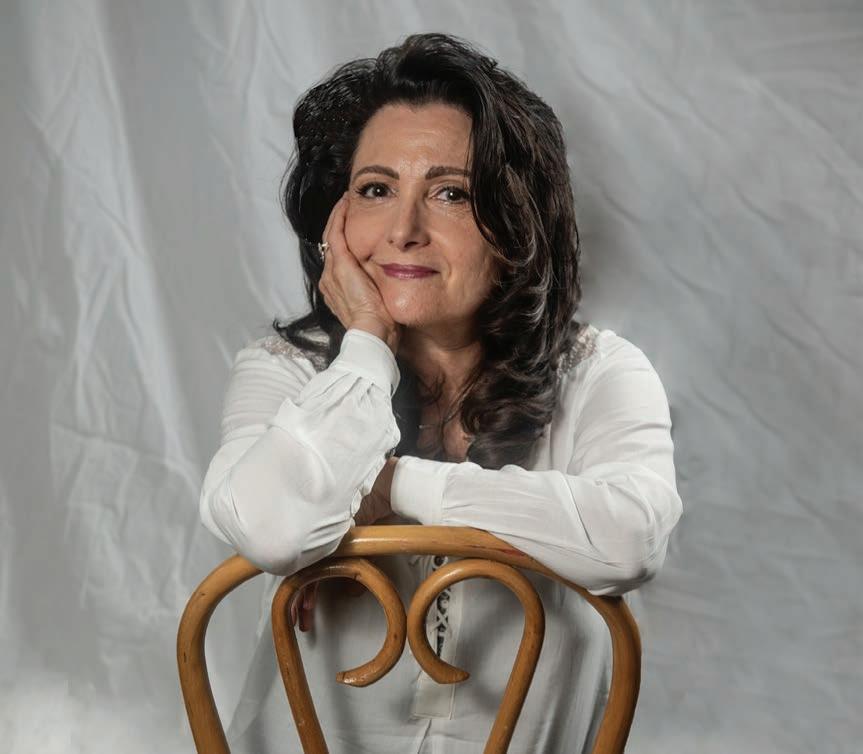
JAZZ VOCALIST | SONGWRITER | PERFORMER | INTERNATIONAL RECORDING ARTIST & GRANDMOTHER
Singing and performing brings me joy. There’s an element of escape and liberation, too, but also a connecting with the audience—of sharing the joy.” MAP
Mary Ann Palermo performs in duos, trios, and five- or six-piece ensembles across various venues and events in the Berkshires of Massachusetts and the New York and Connecticut Tri-State area. She showcases her talent in multiple genres with a strong focus on jazz. Her portfolio includes performances at jazz festivals, concert series, and private gatherings, where she captivates audiences.
Mary Ann, tell us about remembering your early realization that music was going to be your main focus?
I’d go out with friends to karaoke, and this must have started after my daughter was old enough and I could have a night out once in a while. People would tell me that I could really sing, and before long I was playing in public, with one of my first gigs at The Lion’s Den as a solo performer, and then the gigs were more often as a duo, and then with full bands. This goes back to when there seemed to be a music venue or two around every corner.
My first Jazz performance was at the Berkshires Jazz Showcase, which is produced by Berkshire Jazz.org.
Warming up your voice involves specific exercises that you practice. What are some of these exercises, and how do you modify them before a performance compared to your daily practice?
How do I prep for a performance? Rest, hydration, throat muscle relaxing exercises, and my herbal concoctions along with spacing out performances. The spacing out of performances with two days in between doesn’t always happen but singing too much and too frequently is a great way of ruining your voice. Another important thing is to not always sing in the same range constantly. Oh, and I’ll bring along a mix of hot water, lemon, honey, and sometimes ginger, but don’t tell anyone.
I’m interested in your role as a liturgical guitarist and professional cantor. As a music director for two churches in the Berkshires, I’d like to know what your work entails. What differentiates this role from your other performances?
For starters, providing music at Mass is not the same as performing on stage, and it’s a matter of being part of the communion, part of these parishes. It may strike some people as funny, my working in the
churches and singing in nightclubs, but overwhelmingly the support from the parishes has been heartwarming and I’m grateful for all the kind words and enthusiasm. I’m blessed to be part of it.
The liturgical guitar is a wonderful addition to religious music and as cantor my voice is another instrument. My responsibilities as music director involve more than playing guitar and singing and includes directing choirs and selecting the right liturgical music to match the readings and liturgy. I love learning the Latin chants, although these can be challenging, but beautiful.
You are multi-talented and have experience as a visual artist. When did your journey in art begin, and what led you to focus on music professionally instead of painting?
Well, the visual art interest started maybe in third grade. I was constantly drawing, starting with my fascination with Disney characters, animals and wildlife, and landscapes, too, and these were apparently grand works of art, at least according to the principal, Sister Mary Magdelene. I always loved my art classes, and all the way through high school,
In the Night, released in late 2024 by Averosa Records, presents old Jazz standards and half-forgotten classics of Jazz reimagined by singer Mary Ann Palermo and five-time Emmy winner Dave Smith on Steinway grand piano.
where I took up acrylic and oil painting. I painted and drew and worked with mixed media for a long time, and I’d show in different galleries. Not long after I moved to New Marlborough I opened up my own gallery-store selling handmade local artists’ works, including my own paintings as well as those by my daughter, Elizabeth Torsay-Wilson, who is a wonderful photorealist painter.
My father loved music and sang all the time, and there was always music in the house, or at least that’s how I remember it. Some of my favorite memories are when my father would take me to different Italian-American clubs that wanted him to sing, and there’s my six-year-old self, sitting on a bar stool in my crinoline dress, watching my father, a cigarette in one hand, a martini in the other, crooning Jazz standards of the day. I’d have anisette cookies and milk or a Shirley Temple and a cannoli, in case you were wondering.
Music was life to him, and as the oldest of five siblings, I was lucky enough to have these wonderful moments. There’s a family story that the Tommy Dorsey Band had asked him to come on as their singer, but he was newly married, and life’s demands were growing. The singer they ended up with, according to the family lore, was Frank Sinatra.
All things considered, the real question might rather be how could I resist the desire to sing.
You must lead an exciting and fulfilling life. It’s no surprise, considering your creative side with music and your residence in the Berkshires, a beautiful area rich in culture, music, and art. Could you describe your family life and what occupies the rest of your day and evening when

you’re not working on your music?
Well, I do the Berkshire Shuffle, and always have, like so many others. I’ve been a bank auditor, a real estate agent, I’ve done featured hand-painted craft piece work for Country Curtains back in the day. As I’ve mentioned, I ran my gallery-store. I also make jewelry, something I started after learning the craft from a gifted friend. I’ve run a range of sole proprietor businesses.
I also homeschooled my daughter, who today lives nearby with her husband and three amazing granddaughters. There’s a big vegetable garden every summer, so there’s planting and pruning and weeding, but that’s kind of interesting considering I’m a certified herbologist and I can’t resist the urge to make homemade tinctures.
Just thinking of all this makes me want to take a nap! Not that I can—I’m getting ready for a weekend show and putting the music selections together for the two parishes.
One frustration is that my performance schedule means I don’t get to see enough of other music performances. I mean, really, I’ve only gone to one evening at Tanglewood this summer!
While growing up, what inspirations influenced you and sparked your desire to focus on your voice, compose music, and perform?
As I’ve mentioned, a house full of music, and my father taking such pleasure in singing, I think that these factors are formative. My father told me once on the way home that singing let his soul fly, and I wanted to fly too. I loved to write poems—I think that started in the third or fourth grade—and this long practice eventually morphed into song lyrics.
Growing up, the world seemed full of music, pop songs were brilliant, and rock music was often musically complex, and all this inspiration somehow carried through my time as a mother with a baby, then toddler, and all the stages, but then suddenly, it seems, there she is, a grown-up married woman with children of her own.
Going to see performances and concerts always drew out of me the sense that music had to be in my life, and in an active way. Not that I let myself dwell on that impulse, not while there were always other things that are important, like family. Back then there wasn’t much support for my pursuing music, except from my daughter and some of my closest friends, and when I had the chance, when I started performing and writing songs, I felt like the rising phoenix. I love it when my granddaughters see me perform and see their pride—“That’s Nonni up there!” I believe I’m helping them know it is important to pursue their dreams, and that I’m modelling in some way that a woman can push herself to chase her dreams. That she can breathe!
Believing in yourself is crucial for any artist, as it fuels your growth and persistence. With numerous recordings and albums to your name, your producer, Tom Teely, has been a vital support throughout your journey. Tell us about how he contributed to your music career?
Having the right producers and collaborators is crucial to growth, and I’ve been very lucky in that regard. Tom Teeley, who is well-known in the area, is also widely known as a songwriter, performer, and actor.
Continued on next page...

He was a key cast member for George Harrison for Beatlemania, both on Broadway and film and on tour, and he’s written songs for Alice Cooper and toured with Joe Jackson as singer-guitarist and with Marshall Crenshaw, and he still goes out touring with The Classical Mystery Tour, has released solo work on A&M Records, and the list goes on.
As a producer Tom is creative, imaginative, and meticulous. He pushes me to my best, and the collaboration is fun, but the work is intense. For instance, we’ll try my singing a phrase in a number of ways, with different accents and stresses until we figure out what works best, and I trust his instincts, and he considers mine. He’s great at musical arrangement, he’s a phenomenal songwriter, and his instrumental skill is outstanding, providing guitar, bass, piano, and synthesizer as needed, and even vocal harmony or back-up. His musicality seems unlimited, like when his arrangements of pop and rock songs on my 2022 album Jazz on the Rocks are transformed as Jazz Rock, Jazz Pop, Latin Jazz, Jazz Blues, along with original music from each of us.
The work with Tom on my upcoming album There’s A Place (Beatles Re-Imagined) has been an adventurous process, especially given his deep knowledge of the Beatles opus. What we did with this work is right there in the album title—re-imagine Beatles songs. For example, work on “The Word,” one of the lesser-known Beatle songs, carries a driving beat much more than the original, with synth playing a big role. He’ll send me an early arrangement and I’ll play it trying various vocal attacks, and by the time I’m in the studio we’ll run through it, Tom might talk about what he’d like to
add to a track or an idea for a new track, and I might want to try it a couple of different ways. Sometimes, as with “The Word,” just a couple of iterations can do the trick, and that’s because Tom is fully invested in the production of the song, and not simply a recording engineer. “There’s a Place” is another good example of what’s great about working with Tom. This song was arranged with a more theatrical tone, even dreamy, and the arrangement pushed me to stretch my vocal range. The good news is that I discovered my vocal range is more expansive than I’d thought.
I’ve enjoyed other collaborations, too. My 2024 album, In the Night, was very different in style than the work I do with Tom. In the Night is a flashback to an early form, the American Songbook carried by piano and voice, where Dave Smith served both as the Steinway pianist and the recording engineer, which is very much part of his wheelhouse as a fivetime Emmy award winner for sound engineering.
There is work I’ve done with Bob Salmieri, a saxophonist, composer, bandleader, and owner of the Cultural Bridges record label in Italy. We work remotely, my getting the music tracks and lyrics, although on some of our songs I’ve written the lyrics. There’s about a half-dozen releases we’ve done together, and many of them have done very well on the streaming platforms.
Does Tom push you hard to get you out of your comfort zone and has proven to be a strong teacher? Or, does someone else do that job? Tom’s role as producer is making music that is high quality. Tom is amazing at guiding the vision of the
song we are recording. He encourages experimentation in phrasing, dynamics, and emotional intensity, thus bringing out the best in me as a vocalist to capture an inspired performance. He is fully invested in the whole process. The music we make is a part of each of us which in turn renders an amazing musical product.
The creative journey of writing a song is often a mix of challenges, delightful experiences, and some interesting self-discovery. Can you describe your songwriting approach and share any exhilarating moments you’ve had while performing your new music?
It’s a while ago now, but there’s one short period when I wrote 12 songs and it seemed like flow, it went on for a couple of weeks. Other times it could take two months for one song, and I have some song ideas that are just fragments or maybe the lyrics without my yet figuring out the music. Two of my favorite songs—”Whispers of the Angels” and “You’ve Got Me Started”—each got written in one night, almost complete, with just some minor tweaking of lyrics or working to sharpen the bridge. Of course, when songs get recorded, there’s often a few changes.
Some songs came to me in dreams, where I woke up with the lyrics and structure already formed, so go figure. Other times it could be an overheard comment in the checkout line or from a friend that inspires a song. Driving in my car is in some ways my music office, where I can get a lot of musical ideas while on route. There’s an interesting project with The Cultural Bridge Label in Italy, where I got lyrics
in Italian and my job was to rewrite lyrics in English, working from a bad Google Translate, and that was a tougher challenge in some ways, but I’m proud of the end result, with this one song garnering over 100,000 streams to date.
Is there a particular song or a few songs that truly reflect your life? If so, I’d love for you to share your experiences surrounding those songs. Whether they celebrate womanhood, mark a personal crisis, explore your journey, or draw inspiration from another artist, music group, or track, please tell us about it.
In some ways songs come from my own experience of course, but it is a mistake to assume the song reflects the artist’s direct experience. “Whiskey Rain,” which is an Americana/contemporary country genre, is a good example—I’ve never killed anyone. “Breathe Now,” one of my favorites, was written after I got the idea from a friend of mine who was going through a very rough relationship. The comment? “I can breathe now that he’s gone,” which evolved into a song of new birth and strength.
I heard what you said, I was your stupid mistake It was loud and clear, even in the dark There’s no going back, just forward now What’s done is done…
Gasping for air rising from the ground, Can’t keep me down.
And I can breathe now that you’re gone.
—"Breathe Now” 2022
People sometimes come up to me after a gig and ask if one or another of the songs I’ve written is based on something in my life, and this is a common enough question, but a song isn’t an autobiography, at least for me. There are experiences, but there is also imagination.
Building a music career can be challenging from a professional and business standpoint. What specific obstacles have you faced in this area? Music isn’t the path to riches, that’s for sure, and that can be disheartening, considering all the time it takes, and time spent on the less fun parts of the business. Recording in the age of streaming doesn’t add up to much remuneration, even though I have well north of half a million streams the last time I counted, and I haven’t counted up my Spotify streams in a while, and this doesn’t even include the other streaming platforms like Apple Music and Amazon Music.
Live performance has its own challenge, including these days the drop in the number of good Jazz venues in the area and what musicians around here get paid basically hasn’t gone up for decades. Musicians work hard in their craft and it takes a lot to perform and if they are doing their part in promotion to get paying customers in the seats and give a premium performance, then they should be compensated fairly.
If anyone told me a few years back that I would dealing with a whole range of software programs, I probably would have laughed. But learn I have. One program is Canva, which I’ve grown to rely on to
put together ads for shows, Facebook and Instagram posts, cover art for new releases, graphics for all kinds of promotion, and when there’s a new release, including Reels of different sorts—animated and/or with audio—and even album covers and videos for You Tube. Microsoft Word comes into play often, although the whole domain of Microsoft OS can still drive me crazy. There’s email, the social media platforms. I’ve even been exploring the AI component of Canva. If this makes me sound like a tech head, rest assured. I can all too easily find myself cursing at the computer.
And there are those times when I’m uploading audio files to get them mastered, or I’ll be navigating distribution portals as I put a new release or a new album out on streaming services, or I’ll be wrestling with a large file download tool when I’m collaborating remotely. I’m about as far from being an expert as you can imagine, but the tech side is unavoidable to some degree. Don’t talk to me about updating my website or adding new content to it, because Wordpress remains mostly a mystery, but I’ve been getting excellent help with the website that keeps my site up-to-date.
There’s the equipment side of things, too. Any gig likely involves bringing along a couple of mic and music stands with a light for the lyric book and set lists. There are the tripods for the speakers, a good power supply filter, extension cords, instruments, a tip jar and table, and even some merch that have their own Venmo QR code.
Continued on next page...
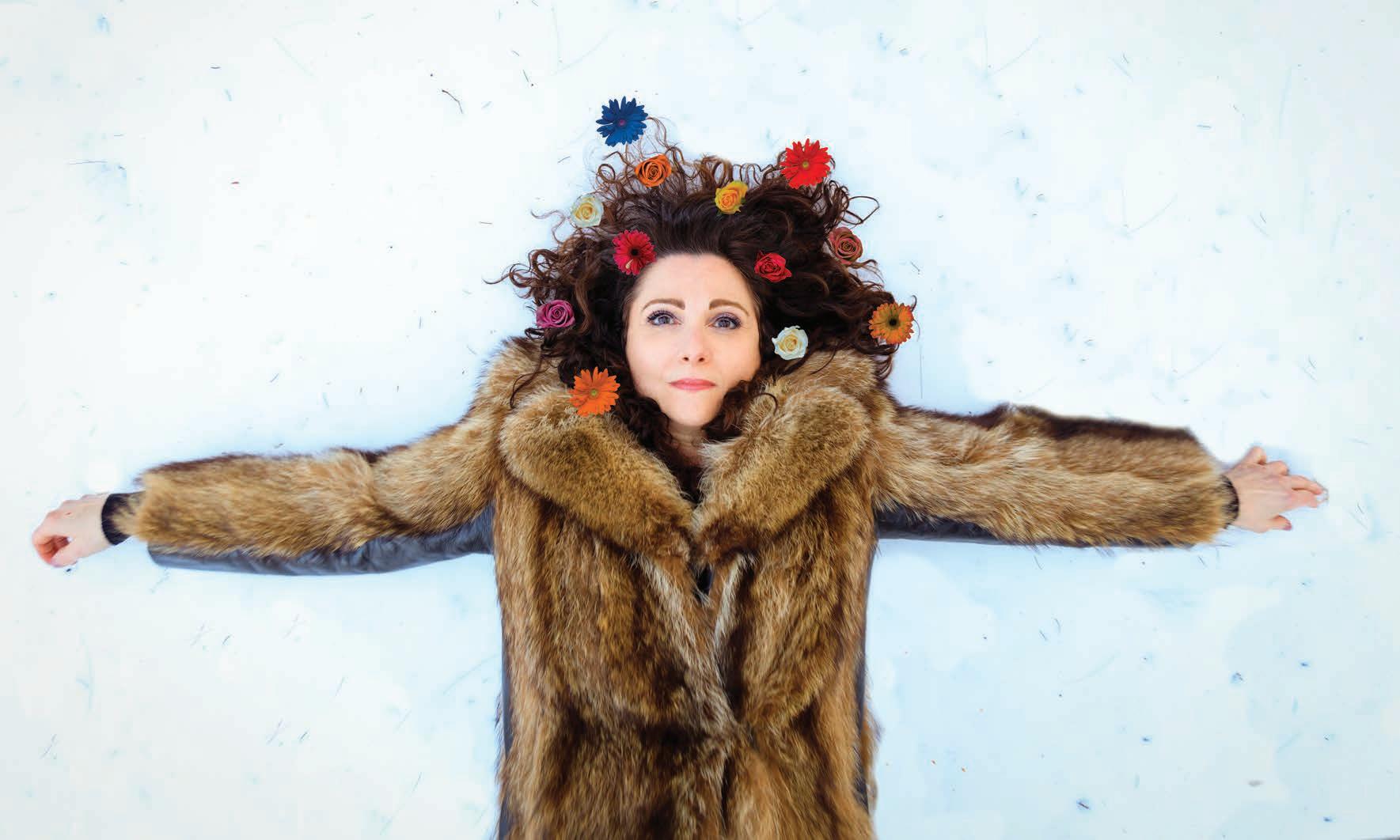
And the PA systems! While some venues have their own decent system, I’ll always pack another system anyway, in case there’s a problem with the house system, but there are venues that either don’t have a house system, or one that is not suitable. In that case I am prepared with a range of PA sets for different playing conditions, from 500-watt powered speakers all the way through to a 2000-watt Electro-Voice system that carries sound well for big outdoor spaces.
My most recent purchase was a smaller 2000-watt system, an Alto TS408, that I’ve been loving, especially at those venues where it requires a lot of lugging. The latest system and two other of my PA systems, includes a monitor, which means I’ll pass that and the speakers through a mix board. I’m always double-checking as I pack up for a gig to make sure I have my microphone, of course, along with all the various cables and connectors required, so I make a habit of thoughtful sorting as I pack. Speaking about packing in equipment, one of my best purchases is an expandable big-wheeled cart that holds the equipment, and that’s great because I’m often my own roadie.
When, during the pandemic, my old band and I were doing outside shows and I got some LED stage lighting we would use. I’ll be pulling those out for a private event this month.
How have you found opportunities, like your performance at the local event in Lee, to be effective in promoting your music and connecting with the Berkshires community?
I’m pickier about where I perform these days, and that’s been better for me. For one thing, as I’ve mentioned before, I think it is my responsibility to promote a gig—and this is the venue’s responsibility too, of course—and all this takes time and effort for emailing my list, putting reels and reels and posts and posts up on Instagram and Facebook, and getting the gig into event calendar listings. There’s a value proposition between the performer and the venue: the performer gets paid and the venue gets more people at their business. I’m still mystified by performers and venues that don’t understand this aspect of the business.
These days I’m looking more and more to ticketed shows, like the performance at Studio 9 this past May. But private events are good, too, and fun, like the last four years at the Sheffield Historical Society Annual Gala, and I’ve been a regular performer at Canyon Ranch. One of my favorite performances over the last few years has been my participation in Millbrook Winery and Vineyard’s Summer Jazz Concert series. I’ve been part of a show at The Colonial in Pittsfield, and some time ago I performed at Valatie Community Theatre. There’s been performances at senior centers, and holiday shows, public tv, radio, those sorts of things that you do as you’re establishing yourself, but these sorts of shows can be so much fun.
These days I’ve been focused on recording and loving it, since it lets me put my music out into the wide world. Of course, promotion comes into play here, too, which is something I love a whole lot less than recording, but it is part of the job.
Do you perform outside of the Berkshires?
I have mainly played within the larger Berkshires area that encompasses the northwest corner of Connecticut and west of the Taconic range and in North County, too, which for many South County residents is regarded as a distant land. As I build my shows schedule, the target area will expand.
Tell us about your current band members! Have any of them made a name for themselves in the world of fame?
I play with the best musicians in the Berkshires. David Bartley is a really fun and versatile piano player with great musicality, and lately Joe Rose has joined me for some gigs, too. There are musicians that play several instruments who are terrific, like Tom Teeley who is great on keyboards, bass, and guitar, and Rob Putnam is versatile, too. For horns I tend to go with Eric Loffswold, and Charlie Tokarz is phenomenal. John Meyers, when I can get him, is an outstanding Jazz guitarist, and Dan Broad and Mary Ann McSweeney are the best bassists in the Berkshires in my opinion. I tend to do duos and trios and quartets, and drums are only sometimes added in, with Sam Earnshaw as my go-to guy these days. I need to work with a pool of musicians because we’re all busy, so when a gig opportunity comes up, it’s mix-and-match time, seeing who’s got the open date, so I’m always keeping an eye open for talent. Speaking of gig opportunities, I was thrilled to perform with Grammy-nominee Matt Cusson recently at a private event and there is another coming up in December, this one a Christmas show. His energy is
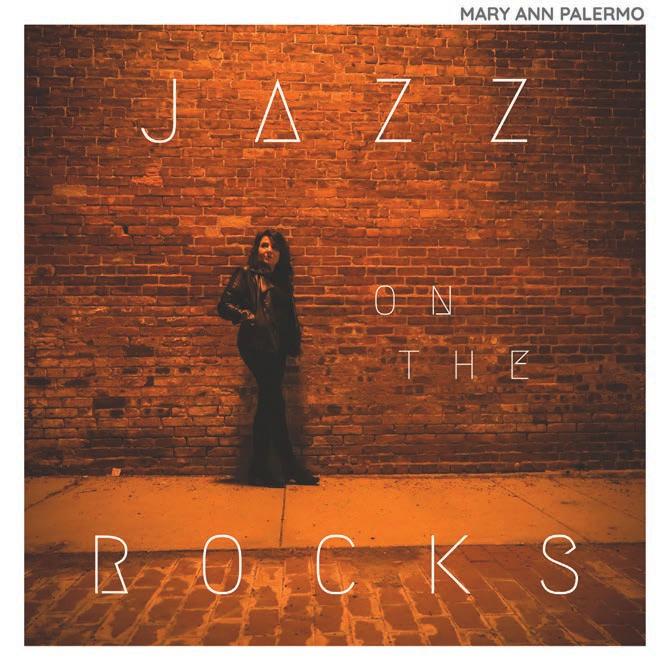
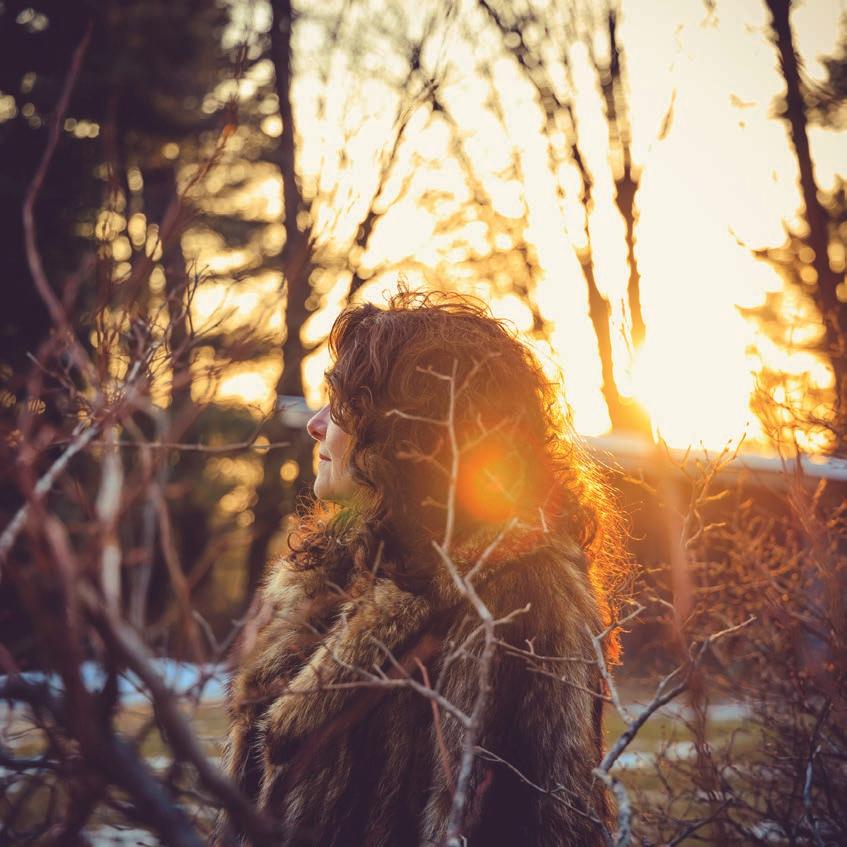
amazing, he’s so good on the piano, and he has an amazing voice. It’s so much fun singing and harmonizing with him.
Tell me, what specifically do you find thrilling about performing in front of a live audience?
There’s a connection between the performer and audience that is irreplaceable, and one feeds the other. I’ve been to venues and have seen musicians who don’t connect with the audience, and it can seem more like a paid rehearsal than a show. They might not realize what they’re missing.
There’s nothing like looking out at the audience and having the attention of the room, it brings the energy up and brings out the best in me and the musicians. I’ll admit that I don’t mind the applause, but a really good show just makes the world that little bit better for everybody, me included.
There’s nothing more fundamental to singing than breathing, and “Breathe Now” came out of a time when there was conflict and challenge in my life that threatened my choice and desire to sing, but I’m still breathing, I’m still singing.
Booking musical appearances can represent a level of success; generally, the more gigs, the better. However, do you envision a time when you can take a step back and focus more on the en-
joyable aspects of your music rather than the constant effort needed to make things happen?
And how do you envision that to play out?
It’s not so much “the more gigs the better,” and for me these days, that’s more “been there, done that.” What’s more important these days is the quality of the gig, and I’ve grown picky about the venues I’ll play. I’ve been enjoying The Ostrich Room at Appletree Inn in Lenox, with its great-sounding space, but these days in these parts other Jazz venues are running light, but one can always hope. The reduction in Jazz venues in the Berkshires is one of the reasons why I’m leaning more and more toward ticketed shows in performance spaces, but my focus on recording remains a priority.
“To be - or Not to be... That is the question!” And, what’s your response?
Any art carries a mix of wonder and annoyance for the artist and it is no different with music, especially if you want to have what you’re doing out in the world. Writing songs can be agonizing, but in a fun, puzzle-solving sort of way. Practice, practice, practice, is a challenge, just in terms of time, but I’ve been back to my guitar work more and more, thinking of doing more solo shows of my songs. I’ve studied piano, but I want to get back to that, since keyboard work is great for songwriting, and I have
a bass guitar that has been calling my name. Speaking of voices in my head, I’ve come to realize that it’s normal for me as a songwriter to have lyrics and melodies going through my head all the time, although I’d sometimes want to put this on pause in the middle of the night.
The fact is that in the world of music if you want your music out in the world—whether through performances or recordings—there’s the unavoidable business part, too. Promotion and seeking the right bookings and assembling the right musicians take time and effort and it can sometimes seem like the business side is too consuming. When it comes to recording, chasing licensing and rights, checking on streams and paying attention to promoting them, and just getting the word out about what you’re up to, those are the tasks that make you need more hours in the day.
And then I remember that I sing, and the pleasure of that, and all the other stuff fades away.
My upcoming performances and new releases are kept current on my website—
maryannpalermo.com
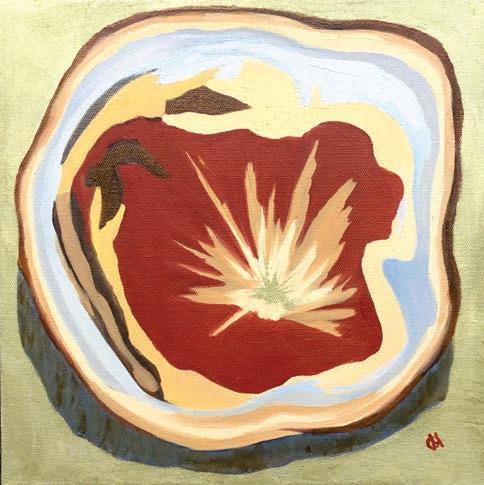

NOVEMBER:
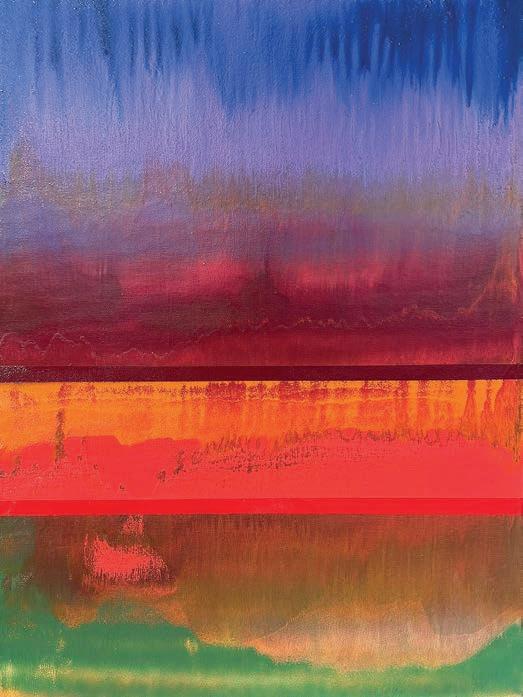
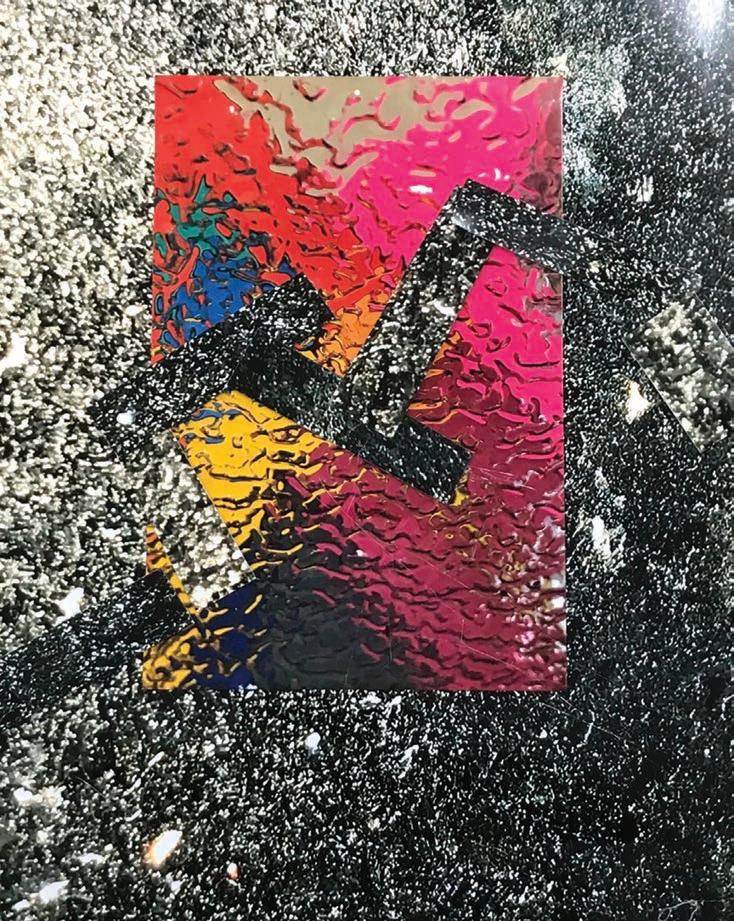
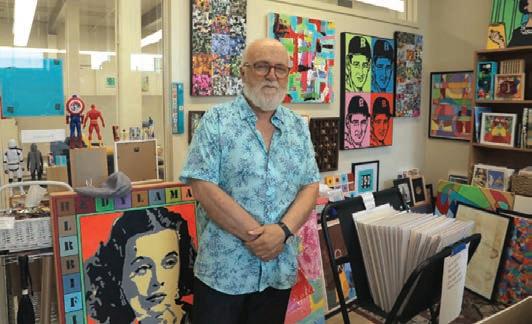
Clock Tower Artists
Business Center Studio #307
75 South Church Street, Pittsfield, MA Instagram- ecurbart

“For me the door to the woods is the door to the temple.” — MARY OLIVER
Interview by Harryet Candee Photographs courtesy of the Artist
The mysteries of trees and the life they support evoke a profound sense of wonder and respect. While we often take trees for granted, Lori Bradley sees them differently. Inspired by both historical and contemporary realist painters, she has developed a unique style called "Alternative Realism." Her extensive collection of oil and acrylic paintings celebrates the beauty of nature, with a strong emphasis on trees. Lori's artwork goes beyond their physical presence to convey the emotions and stories they represent. Each piece invites viewers to pause, reflect, and appreciate the connections between humanity and the natural world.
Lori, what motivated you to start a Facebook group opposing the North Adams/Mass Audubon land management plan that involves logging near the Notch Road Reservoir and the use of herbicides near the city's watershed?
What motivated me at first was the fact that the Notch Reservoir Forest is literally in my back yard. I walk up through the woods in my backyard, onto an old logging road that leads directly down into the Notch Forest by the reservoir. Access to such a beautiful forest is what inspired us to move to North Adams. When I saw an article on iBerkshires.com in July 2024 about a future “climate-smart” logging plan for the Notch I was horrified. I recognized many of the words in the article as “green-speak” and a cover for profit-driven logging. My father was a logger when he was a young man growing up in the Adirondack region of New York State and we talked a lot about logging when we’d go camping. He left that business because he didn’t like what unfettered logging was doing to the Adirondacks. He later became an advocate for the preservation of the Adirondack Park and other green spaces. So, I was inspired by him to speak out. I put out a call-to-action on so-
cial media and was amazing and touched by how many local people came forward ready to stand up and save their town forest and many creative ideas on ways to do that. Over the year, opposing the logging plan became a community endeavor, with forest activists across the state becoming involved and supportive. It was just incredibly inspiring. It turned out that many people, including my husband and I, walked the Notch Forest and Bellows Pipe Trail during the COVID lockdown and found that forest to be an antidote to feelings of hopelessness, isolation, and depression. People tend to forget how forests can heal our bodies and our brains. There are studies by neuroscientists that show this, but at the time of the logging plan we just knew we didn’t want to lose a forest we loved.
Lori, can you share more about how the initiative with Trees as a Public Good helped mobilize sup-

port for your cause, especially with the letters sent to the mayor and state representatives?
When I first started researching the types of “experimental” logging projects planned by the town and Mass Audubon, I found a website by Buckland resident, Chris Matera: https://maforests.org. The headline that jumped out at me was “Stop the Massachusetts Chainsaw Massacre,” and I read on from there. The information on the site confirmed all my worst fears, and there was even a link to the greenwashing euphemisms for logging-for-profit used in the plan proposed for North Adams. I contacted Chris for help, and he responded immediately. He put me in touch with a woman named Janet Sinclair, also from Buckland. She called and offered me all the help she could give, including legal advice, information on how best to tackle city and state politics, and tons of information about logging and forestry. She became a great ally for us and eventually brought renowned forest experts and advocates to meet with the mayor of North Adams. I think this all had a big influence on the eventual outcome. Through Janet, I started attending Trees As A Public Good network meetings, which were incredibly helpful, especially in distributing action
alerts statewide that brought in hundreds of signers for our petition. I met so many brilliant people though the opposition of the Notch logging plan, and I continue to work with them on other issues statewide.
How did this project, luckily, finally get canceled? Good work to all!
I think all the concerted efforts had their impact. In October of 2024 there were protestors out in front of City Hall every weekend, led by North Adams resident Devin Raber. The opposition to the logging was gaining a lot of visibility, and finally, in December 2024, the mayor announced in the Berkshire Eagle that she had ended the project. It was the best holiday gift ever!
The painting Erosion is powerful. Where is it now? Are there more like this with the same determination to protect the forest?
I created the Erosion painting after going for a canoe trip on a remote reservoir in the Adirondacks. It had been affected by increasingly extreme cycles of flooding and drought, and I was shocked by how quickly the perimeter of the reservoir was eroding,
with deep undercuts and trees falling into the water. The landscape was very dramatic and beautiful in its way, but it was also horrifying. So, since then I continued to paint trees that were under some kind of stress due to human-caused environmental changes. I’ve been focusing on painting close-ups of individual trees that I think of as portraits because, to me, trees all have unique personalities and are a powerful presence in our lives, even if we take them for granted.
What drives your fascination with capturing the energy of trees in their environments, and how do you incorporate the hidden aspect of their roots, which are often as expansive as the trees themselves?
I often went camping with my family as a kid, and my older siblings thought it was funny to scare me by telling me the trees were watching and would grab me if I didn’t go to bed on time. I wasn’t scared by the trees, but I did start to think about them as having personalities and the ability to communicate with humans.
Continued on next page...


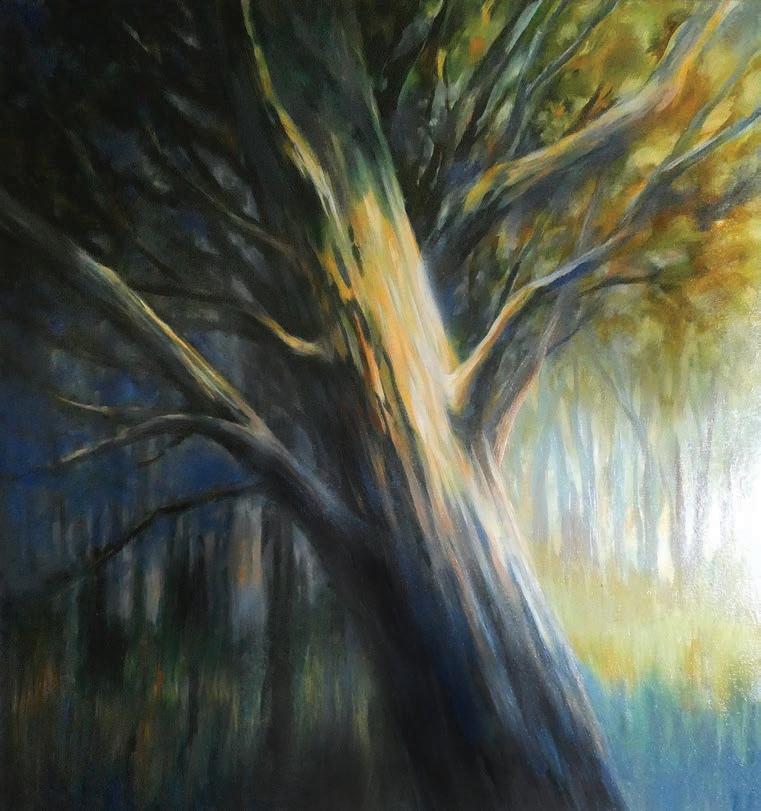
I also loved Norwegian and Russian fairy tale illustrations, where trees were always key to the composition and were as gestural and alive as the human beings. I’ve always loved the forms of roots and branches and was inspired by the turn-of-the-century furniture and architecture made from roots at the Great Camps in the Adirondacks.
What kinds of trees in particular have caught your interest, and are they also the ones you focus on to paint? Have you ever seen the Redwoods in California or those in Canada?
Evergreen trees are my favorite, and the trees in the Adirondack Park have always been an inspiration. We still have a camp there near where my father grew up, and the few remaining old-growth forests are inspiring. The forest-economy culture, including the old-school loggers like those in my family, is also inspiring. The trees were used for commerce, but I’ve found there is a deep love for forests and an urge to preserve them. This has resulted in the creation of the largest “forever wild” reservation in the Northeast, the Adirondack Park.
I love the Canadian landscape painters from the Group of Seven and especially the tree paintings by Canadian painter Emily Carr. I lived in Canada for a while and loved the dense pine forests in New Brunswick, Nova Scotia, and around the Great Lakes region in Canada and the US. The Appala-
chian Mountain forests of North Carolina, Tennessee, and Georgia are also beautiful and magical.
Do you examine how trees change in response to climate, their history, and how these factors can influence a painting?
I have done that since I was a kid because my mother was very sensitive to changes in trees and the forest. We’d discuss what was happening with climate change when we went hiking. She noticed the changes in the trees at the tops of mountains around the Blue Ridge Parkway in the 1990s, and it’s always been something I’ve been aware of and worried about.
Have you ever had a moment in nature where you felt like the surroundings magically came to life? What do you think contributed to that feeling?
Every time I walk in a forest or in a park, something special happens. Even if I’m in a bad mood, I come out of those places feeling better and wondering why I’d been so down. Because I read a lot of fairy tales, where trees could be both friendly and malign and always magical, forests always seemed alive to me. My friends and I played in the woods surrounding our neighborhood when we were kids, and sometimes acted out fairy tales there. It was such a special time and so full of wonder.
What would you say are your most favored honed skills when it comes to painting, Lori? And what do you find challenging each time you paint?
I’m always taking painting workshops to hone new skills. I’m learning how the Dutch painters created their incredible floral still life paintings in the 16th century and trying to adapt some of those techniques to my paintings. I’m working on a certificate in woody plant botany online with Cornell Continuing Education to become much more scientifically accurate in my depictions of plants. Learning the scientific specifics of plant form and function is fun and adds to the mystery of plants.
In the Bird series, where you’ve brought the bird to life, what insights can you share about this body of work? I find it both illustrative and imaginative.
Bird feeders are placed all over my yard to encourage birds to visit and interact, allowing for close observation of their behavior. They are very humorous and act in ways so like humans, especially crows and corvids, like grackles. I love the forms and shapes of birds.
Still, I decided to start painting them to tell stories about human interactions and relationships, capturing emotion with the expressions on their faces. Continued on next page...

I’m currently working on a series of floral still life paintings that includes birds.
Lori, can you tell me more about your Floral Nexus series and how you approached its decorative style and use of color in your designs?
The Floral Nexus series was inspired by some botanical illustrations I’d done and incorporates techniques such as using bright colors and expressive paint. I often work with paintings in a modular way – where groups of paintings have some internal structure or pattern that connects individuals to the whole. I was arranging the Floral Nexus paintings in various ways, yet they always connect on the diagonal axis.
How do you manage dividing your time between New Bedford, MA, where you have a studio, and the time you spend in North Adams?
Well, I’m slowly transitioning full-time to North Adams. My husband and I landed in southeastern Mass because we were both teaching at universities here. I love New Bedford, though, and enjoy the coastal pine barren forests in the area, but we plan to retire to North Adams. The northern forests of New England and New York are really my spiritual home, and I get homesick when I’m away from them too long. Right now, it’s hard to drive back and forth and maintain friends and relationships in two different locations. Still, I try to focus on the joy of
it —the experience of driving through beautiful New England — and feel very fortunate to have found two such special places to live.
Lori, how do you and your husband, Mark, balance your artistic lifestyles?
Mark and I are both obsessed with our artwork. We don’t share a studio, but we do share our ideas about art and ask each other for advice. Mark is much more abstract in his style and much less literal than I am, and that inspires me to loosen up and experiment a bit more. I think I have the opposite impact on him. We are both inspired and influenced by nature.
Where are most of your paintings currently displayed, and how does that influence what you are working on at the moment?
I regularly exhibit work in a gallery in New Bedford and have my own studio, which I share with a large group of other artists. We host open studios regularly, which have been very well-attended and have helped me shape my art into a viable business. I also travel around New England to hang my work in solo shows. I have a show coming up in October and November at the Majestic Theater in Springfield, MA. The curators there saw my still life paintings with birds, flowers, and vases, and thought they’d be a good match to hang during the theatrical production of Steel Magnolias. I thought that was a fun idea since those paintings are about loss, the ebb and flow
of relationships, and seeking enduring strength.
How are you feeling about the upcoming winter season? Any ideas on what you would like to paint?
I grew up on Lake Ontario in central New York, so I had to love winter. I’m trying to get better at painting the complex colors of snow, so I will be painting away, probably creating landscapes and treescapes from photographs I’ll take of the snowfall I hope we get this year.
What does your opening quote, “For me the door to the woods is the door to the temple.” by Mary Oliver mean to you?
I love Mary Oliver, her poems, and her deep connection to the woods. I agree with her in this quote. Forests are a spiritual place for me, and I must visit them and connect with them often to maintain energy, equilibrium, and peace of mind. loribradley@comcast.net loribradleyart.com

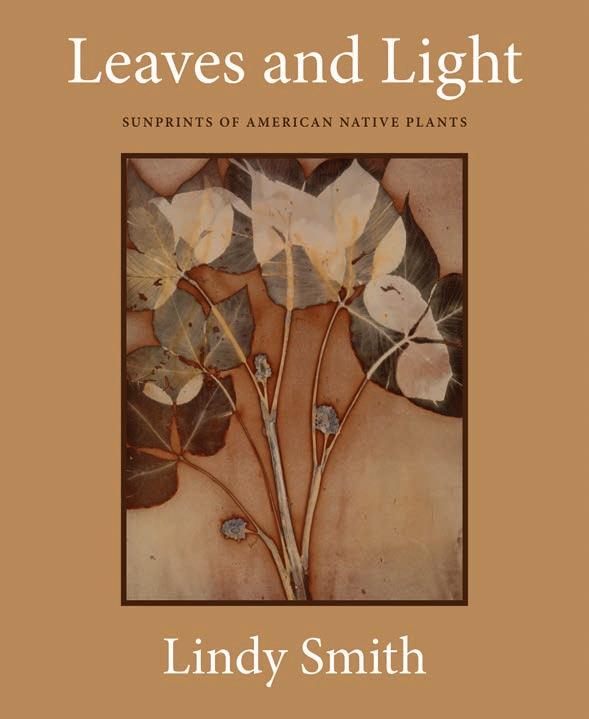

Whimsical Sculpture by Jeffrey Bynack made from found metal parts & objects. Welded and mechanically fit. Perfectly suitable for indoor and outdoor enjoyment.
artfulmind@yahoo.com —Commissions gladly considered—
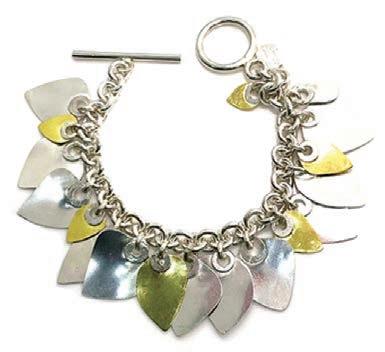
With the tumultuous state of affairs, most are not comfortable with a purchase that’s a “want”, not a “need”, of a certain price range. Seams somewhat frivolous? Well, that’s why I tout repurposing! Your collection of jewels from over the years, possibly sitting idly by, no longer exciting, are the key to your new jewelry item(s)! Possibly more than one, depending on your stash! You would be surprised how far your metal/stones can go. Winter is prime time for me to develop the designs for you. Black Friday begins my 6-7 days a week in store schedule until Dec. 31st. Before Nov 28th; Wed-Sat 11:00-4:30, or by appointment. 917 971 4662. Chatham NY is alive and well, and waiting for a visit!
Joane Cornell Fine Jewelry— 917-971-4662
9 Main St. Chatham, New York. www.JoaneCornellFineJewelry.com Instagram: Joane Cornell Fine Jewelry
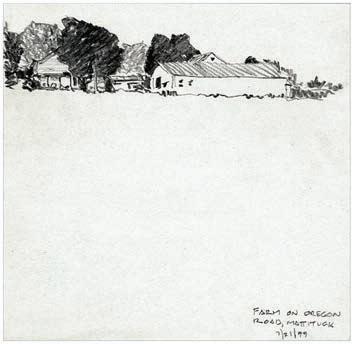
I have been making art on and off since my undergraduate education as an architect in the late 1950s. I rarely leave the house withut a sketchbook and pen or pencil.
In the summer of 1999, my wife and I rented a house in the village of Mattituck on the North Fork of the East End of Long Island, in Suffolk County, New York.
Unlike the South Fork, whose farms and forests over the years have been mostly subdivided and turned into vacation home communities, the North Fork has remaine agricultural, and we were surprised and delighted by how farm-like the landscapes were. For me, they presented endless invitations to draw.
On many mornings during our summer in Mattituck, I would take my bike with my sketchbook strapped down to the luggage rack and go off exploring—and drawing. I am always experimenting with different sketchbooks but had not used a square format before. I was intrigued by the geometry of the square and how it could both influence, and be affected by, the placement of shapes within it.
Stephan Marc Klein — stephanmarcklein.com | smk8378@gmail.com Member 510 Warren Street Gallery, Hudson, NY


I am a visual artist using photography as the platform to begin a journey of exploration. My journey began in earnest almost 14 years ago when I retired due to health issues and began devoting myself to the informal study of art, artists and particularly photography. Before retiring I had begun studying photography as a hobby. After my retirement, the effort took on a greater intensity.
My world had changed for reasons outside of my control and I looked for something different in my work. I wanted to do more than document what was around me. I wanted to create something that the viewers might join with me and experience. Due to my health issues, I found myself confined with my activities generally restricted. For the first time I began looking inward, to the world that I experienced, though not always through physical interaction. It is a world where I spend more time trying to understand what I previously took for granted and did not think about enough. The ideas ranged from pleasure and beauty to pain and loss; from isolation to abandonment; to walking past what is uncomfortable to see. During this period of isolation, I began thinking about what is isolation, how it can transition to abandonment and then into being forgotten. The simplest display of this idea is abandoned buildings. They were once beautiful, then allowed to run down and abandoned, soon to be forgotten. After a while they disappear. Either mankind knocks down these forgotten once beautiful structures, or remediates them, or Nature reclaims the space. Doesn’t mankind do the same with its own?
My work employs references to other photographers, painters, as well as sculptors. The brushwork of Chinese and Japanese artists is appealing for both its simplicity and beauty. Abstract art has its own ways of sharing ideas which are jarring and beautiful at the same time. Black and white and color works each add their own dynamic. My work is influenced by these art forms, often using many of them in a single composited image.
Bruce Panock— Panockphotography.com bruce@panockphotography.com Instagram @brucepanock

I had to cut down a tree!
When my cat died a few years ago I had an unbelievable sadness and it took three years before I could get another cat. I did not know one could feel this same sadness when a tree dies. In the Spring, we had to cut down two limbs of this crabapple. It still gave me beautiful blossoms in May and continued to provide shade and beauty to my garden. By the end of July, “My Tree”had lost its leaves and was showing lesions on its trunk. “We had a very dry Summer” said one neighbor! “It will be beautiful again in the Spring” said another! However wood dust accumulated at the feet of “My Tree”. I worried and brought in a tree specialist. “Possibly termites…. Definitely in very bad shape! SICK! Can’t save it!” … just like my old cat…. Deciding to let someone or something go is difficult… Jane Goodall says global energy resides in all plants, animals and humans. RIGHT! In the company of “My Tree” in all seasons of the year I felt this energy. The leaves, shade, blossoms, color, trunk, snow gathering spaces were so familiar! The visiting birds and insects were always welcomed and entertained. I watched it from my window, my bed, my kitchen… by all weather!
THE TREE came down. I touched its bleeding bark and sliced limbs and cried.
I brought the logs inside even though the vermine was feasting on them and I painted its colors on canvas. They say that artists can be crazy. Feeling the passing of a fifteen years old cat with tears is acceptable, so why not a tree who has been your companion for just as long?
By the way, if you want to see my paintings of the logs they will be exhibited in November at The Spring Street Market Cafe, on Spring Street, Williamstown, MA. This is a SOLO SHOW of new works. I will let you know of the Opening Reception with flyers and Internet.
Meanwhile you can always reach me at 413-5971716 if you wish to visit my ART STUDIO. I take appointments or welcome you as you visit town. Take note of another interesting event: I am organizing with other artist friends a FUNDRAISING for DOCTORS WITHOUT BORDERS on December 6th, 11am to 3pm at the Harper Center, Williamstown Council on Aging on Church Street in Williamstown. Their phone number is 413-4588250 if you wish more information. Early December is a good time to do shopping for the Holidays and all our art will be for sale at very affordable gifting prices.
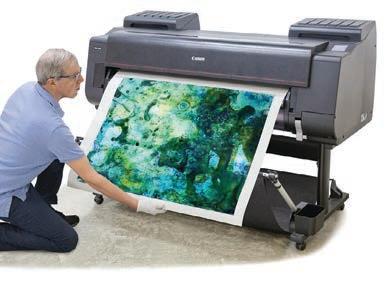
Since opening in 2005, Berkshire Digital has done fine art printing and digital scanning for artists and photographers. Archival Inkjet/Giclée prints can be made in many different sizes from 5”x7” to 42”x 80” on a variety of archival paper choices. Berkshire Digital was featured in Photo District News (PDN) magazine in an article about fine art printing. See the entire article on the BerkshireDigital.com website.
Berkshire Digital does accurate digital scans of paintings, illustrations and old photographs that can be used for archival prints, books, magazines, brochures, cards and websites.
Berkshire Digital also designs and produces books printed by Blurb.com
“Fred Collins couldn’t have been more professional or more enjoyable to work with. He did a beautiful job in photographing paintings carefully, efficiently, and so accurately. It’s such a great feeling to know I have these beautiful, useful files on hand anytime I need them. I wish I’d called Fred years ago.” ---- Ann Getsinger
We offer restoration and repair of damaged or faded photographs. A complete overview of services offered, along with pricing, can be seen on the web at BerkshireDigital.com
The owner, Fred Collins, has been a commercial and fine art photographer for over 30 years having had studios in Boston, Stamford and the Berkshires. He offers over 25 years of experience with Photoshop, enabling retouching, restoration and enhancement to prints and digital files. The studio is located in Mt Washington but drop-off and pick-up is available through Frames On Wheels, 84 Railroad Street in Great Barrington, MA (413) 528-0997 and Gilded Moon Framing, 17 John Street in Millerton, NY (518) 789-3428. Berkshire Digital413-644-9663 www.BerkshireDigital.com

Growing up on the South Side of Chicago in the 60’s was a history, rich and troubled time. As a youth, my playing in the streets demanded grit. Teaching Tai Chi for the last 30 years requires a “Zen state of mind”. My paintings come from this quiet place that exhibit, the rich grit of my youth .Movement, shape and color, dominates, spontaneously combining raw as well as delicate impulses. I was honored with the exhibition of my abstract painting (inspired by Vermeer’s Girl with a Pearl Earring) in the Amsterdam Vermeer exhibit 2024 . Ruby Aver— Housatonic Studio open by appointment: 413-854-7007 / rdaver2@gmail.com Instagram: rdaver2
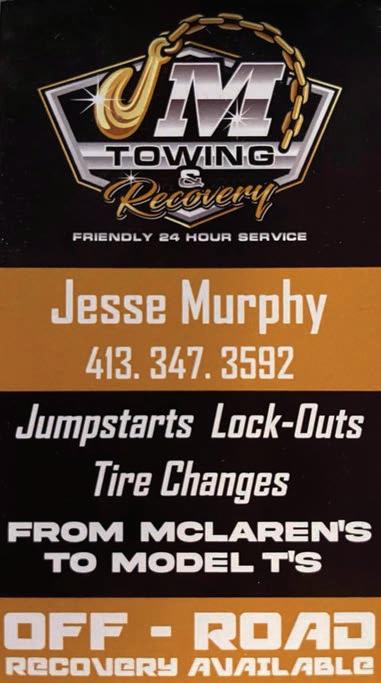


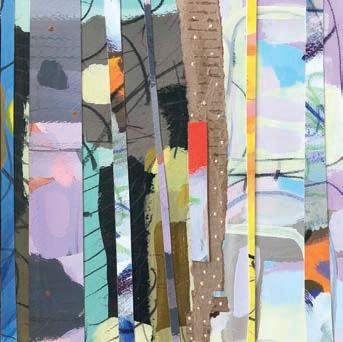
"I was really anxious because we were pretty much snowbound in our homes, being in a particularly cold 2025 winter. I had moved many of my art supplies to my studio in Southfield, and had begun organizing works. The idea of playing with them, cutting some of the ones to which I felt drawn to do so, this had been playing around in my mind for a looooooong time, but this weather allowed me to take advantage of the opportunity- I couldn't go anywhere, so I could just focus and play."
Jaye Alison harnesses water-based mediums like acrylic and watercolor, influenced by a creative upbringing and artistic journey. Through abstraction and intuitive color selection, she captures the interplay between forms with lines that articulate deep-seated emotions. Her art resonates with joy and upliftment, transforming personal and worldly complexities into visual harmony.
The artist is passionate about creating art, painting on flat, smooth surfaces, and using environmentally friendly materials.
Alison’s work has been exhibited nationally and internationally and has appeared in print, film, television, the web, and Off Off Broadway.
Transforming personal and worldly complexities into visual harmony. In celebration of Jaye's new studio, enjoy 10% off large paintings and 30% off small paintings.
Jaye Alison — 310-970-4517
Studio visits by appointment only: Pond Shed (behind the Buggy Whip Factory), 208 Norfolk Road, Southfield, Massachusetts jayealison.com jaye.alison.art@gmail.com

Pastels, oils, acrylics and watercolors, abstract and representational, landscapes, still lifes and portraits, a unique variety of painting technique and styles you will be transported to another world and see things in a way you never have before join us and experience something different.
Painting classes continue on Monday and Wednesday mornings 10-1:30pm at the studio and Thursday mornings out in the field. These classes are open to all...come to one or come again if it works for you. All levels and materials welcome. Private critiques available. Classes at Front Street are for those wishing to learn, those who just want to be involved in the pure enjoyment of art, and/or those who have some experience under their belt. Kate Knapp — 413-528-9546 at home or 413-429-7141 (cell) Front Street, Housatonic, MA. Gallery open by appointment or chance anytime. www.kateknappartist.com
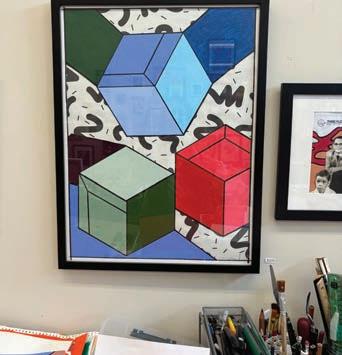
I am an abstract artist whose two and three-dimensional works in mixed media reveal a fascination with geometry, color and juxtapositions. For me it is all about the work which provides surprising results, both playful and thought provoking.
From BCC to UMASS and later to Vermont College to earn my MFA Degree. I have taken many workshops through Art New England, at Bennington College, Hamilton College and an experimental workshop on cyanotypes recently at MCLA. Two international workshops in France and Italy also. I am pleased to have a studio space with an exciting group of artists at the Clocktower Building in Pittsfield.
Bruce Laird — Clock Tower, #307, 75 South Church Street, Pittsfield, MA. Instagram: @ecurbart
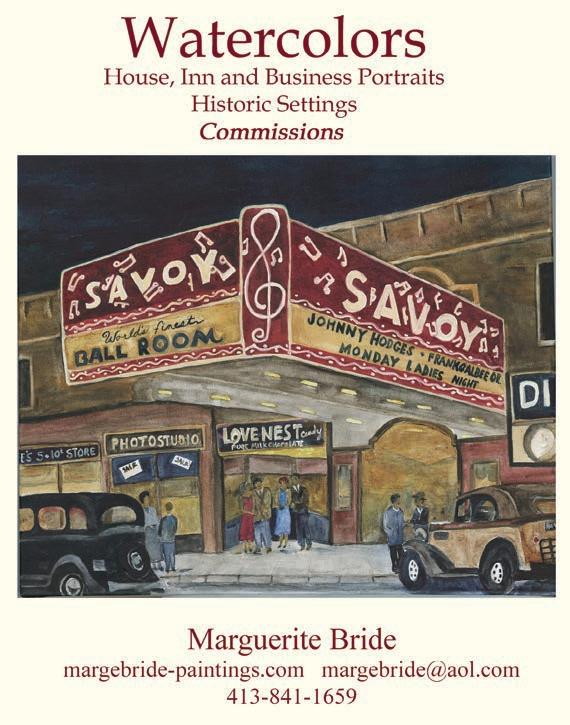
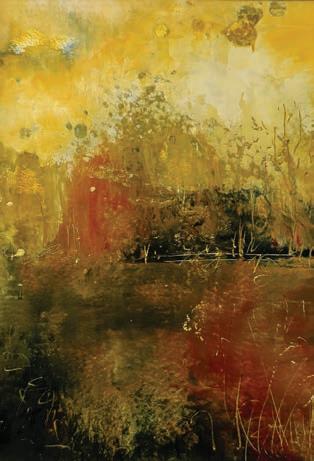
My work is about relationships. Connecting with my creative spirit and the world and people around me, most especially Mother Nature in all her beauty and her challenges. There is a voice in nature that touches us and connects us to one another in ways that evokes an emotion and stirs the soul. My work is about creating that connection. It is a metaphor for so many ethereal moments in life that are fleeting and bring with them a bond like no other. Using oils with cold wax medium allows me to express this connection like no other medium has over the years.
My work can be found in the gift shops of Chesterwood, Becket Arts Center as well as Art in the Berkshires The Lenox Collection at The Constance Inn located at 11 Old Stockbridge Rd. Look for me as well at the Holiday Small Works Exhibit December - February at the Art on Main Gallery in West Stockbridge.
For more information on workshops and classes contact me directly.
Carolyn M. Abrams — www.carolynabrams.com Member, Guild of Berkshire Artists

Deborah H. Carter is a multi-media artist from Lenox, MA, who creates upcycled, sustainable wearable art. Her couture pieces are constructed from post-consumer waste such as food packaging, wine corks, cardboard, books, wire, plastic, and other discarded items and thrifted wares. She manipulates her materials' color, shape, and texture to compel us to question our assumptions of beauty and worth and ultimately reconsider our habits and attitudes about waste and consumerism.
Since she was eight, Deborah has been a sewing enthusiast, and she learned her craft by creating clothing with her mother and grandmothers. Her passion took hold as she began to design and sew apparel and accessories. After graduating with a degree in fashion design from Parsons School of Design in New York City, she worked as a women's sportswear designer on Seventh Avenue.
Deborah's art has been exhibited in galleries and art spaces around the US. She was one of 30 designers selected to showcase her work at the FS2020 Fashion Show annually at the University of Saint Andrews, Scotland. She has been featured in the Spring 2023 What Women Create magazine.
Deborah H. Carter has been featured in The Artful Mind, Berkshire magazine, and What Women Create magazine and was a finalist in the World of WearableArt competition in Wellington, New Zealand, 2023.
“Sending Messages” on display at Hancock Shaker Village, 34 Lebanon Mountain Rd, Hancock, MA. Through November 30th. Deborah H Carter — 413-441-3220, Clock Tower Artists

EARLY SNOW WATERCOLOR, 11” X 14”ACRYLIC 16”
Born and raised in the captivating Berkshires, Sally Tiska Rice possesses artistic prowess that breathes life into her canvases. As a versatile multimedia artist, Sally seamlessly employs a tapestry of techniques, working in acrylics, watercolors, oil paints, pastels, collages containing botanicals, and mixed media elements. Her creative spirit draws inspiration from the idyllic surroundings of her rural hometown, where she resides with her husband, Mark, and cherished pets.
Sally's artistic process is a dance of spontaneity and intention. With each brush stroke, she composes artwork that reflects her unique perspective. Beyond her creations, Sally also welcomes commissioned projects, turning heartfelt visions into tangible realities. Whether it's capturing the essence of individuals, beloved pets, cherished homes, or sacred churches, she pours her soul into each personalized masterpiece.
Sally Tiska Rice will be the featured artist at the Hotel on North, located at 297 North Street, Pittsfield, MA through September 1, 2025. Set in the heart of downtown Pittsfield, this beautifully restored boutique hotel blends 19th-century architecture with sleek, contemporary design—and is the perfect backdrop for Sally’s richly layered, lightfilled artwork.
Sally’s work is on the gallery walls of the Clock Tower, Open Monday-Friday 9:00-5:00 pm for self-guided tours.
I like to be the right thing in the wrong place and the wrong thing in the right place. Being the right thing in the wrong place and the wrong thing in the right place is worth it because something interesting always happens.
—Andy Warhol
75 S. Church St., Studio 315, 3rd floor Pittsfield, Massachusetts Instagram: @deborah_h_carter Debhcarter@yahoo.com

SallyTiskaRice@gmail.com www.sallytiskarice.com https://www.facebook.com/artistsallytiskarice Fine Art Prints (Pixels), Twitter, LinkedIn Instagram, YouTube, TikTok
Calendar Listings + Editorial + Advertising & Promoting + Hands‐on & Online art publication since 1994 The Artful Mind welcomes your presence with news of upcoming events. Please email or call: artfulmind@yahoo.com and 413 ‐ 645 ‐ 4114.

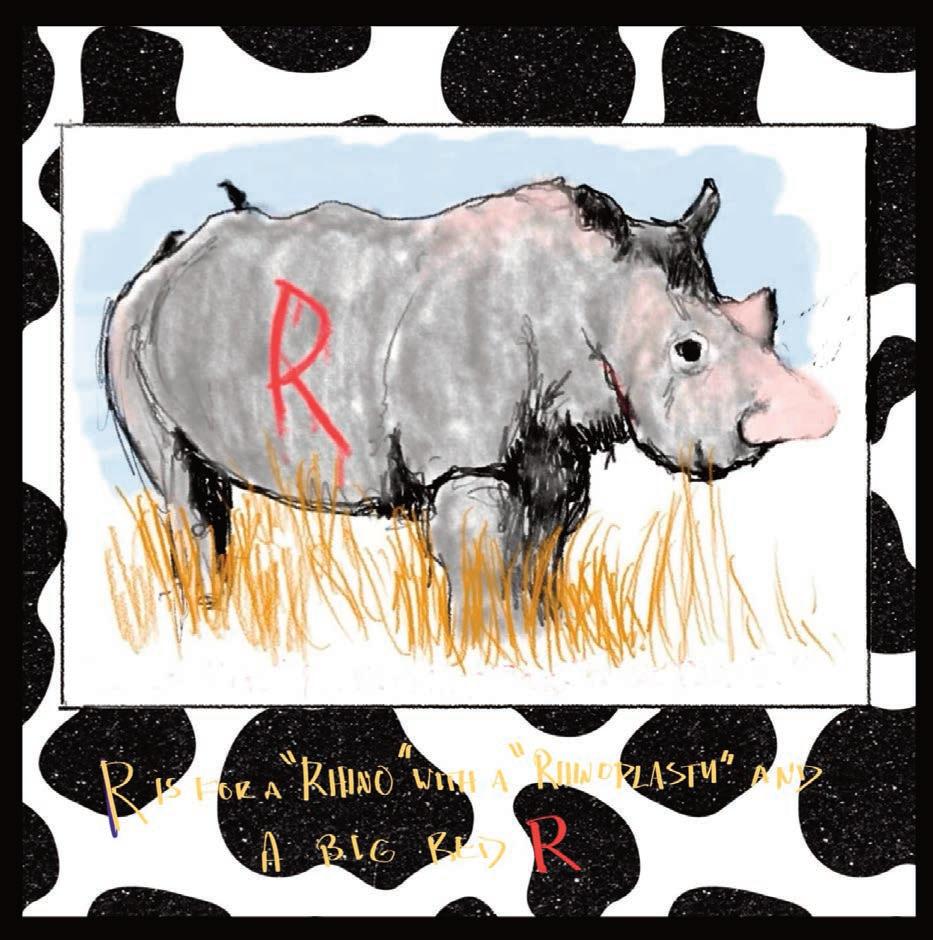

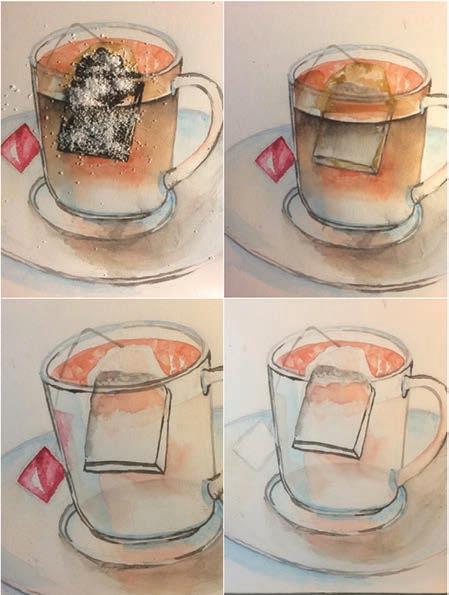

Pittsfield, MA (413)-446-8469 www.sallytiskarice.com sallytiskarice@gmail.com

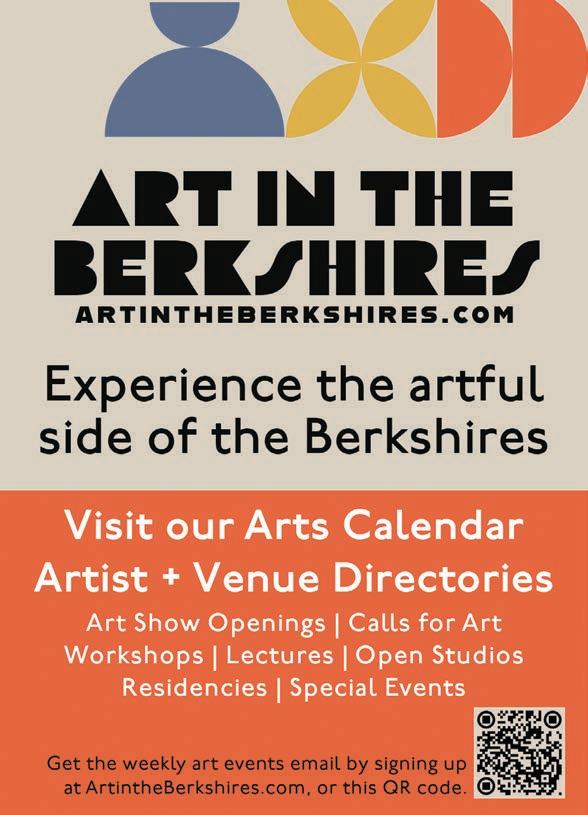

rdaver2@gmail.com | Instagram: rdaver2. Housatonic Studio open by appointment 413-854-70067

Valeria and the Ants CHAPTER 6
The Ants and The Punic Wars
It was obvious why the ants hated the elephants, but why would the elephant hate the ants? I was sure Valeria would have some interesting explanation, but some time went by before I had the pleasure of talking to her again. Meanwhile, I worked at my job as the operator of the bumper cars, and I even began to lecture the customers about the free will aspect of the ride, going so far as to make up my own lecture about the superiority of the “free will experience,” as I called it.
I had no stake in the affairs of the carnival or its people, and except for Valeria, I kept my distance from the other members of the troupe. They looked upon me as a temporary hire, and assumed I would soon depart. They even went so far as to talk about me in the third person, when sitting just a few feet away. They referred to me as “Joe’s Replacement,” as if that was my first and last name, and after a few weeks I started to call myself “Free Will Joe,” when people asked me who I was.
One day on my way to my station I saw in the distance that Valeria was talking to the owner himself. They were too far away from me for me to hear their conversation, but I stopped to watch them for a moment. She went on about something, and he listened to her attentively. Their roles seemed to be reversed, like she was a teacher reprimanding a student who was doing poorly in school. Then, she walked away from him and I passed her walking on one of those dirt tracks bicycles make in a field. I said, “What were you talking to the boss about.” “Thats’s none of your business,” she answered, but then perhaps thinking it was too harsh a reply, she said, “Will you buy me a lemonade.”
Just like with the fried dough, the lemonade stand person refused my money when he saw I was with Valeria, and we sat down at a blue picnic table, and like before, she said nothing and started to pick at the blue paint with her fingernail. On her little finger she had a cloisonne thimble.
Although she had refused to tell me about what she was talking to the boss about, I could see that she was troubled about something, so I asked, “How is Syracuse doing?” This was perhaps the wrong question to ask her, because she just shook her head a little and said nothing. “And the Elephant Bruno, how is he?” I asked.
She suddenly became animated and said, almost shouting, “He wants me to kill all the ants. He says for me to exterminate them. I tried to explain that they are nice harmless beings, but he says, ‘Pour kerosene on their ant hill, light it on fire, show me where they are, I will stamp them out.’ but those ants
really have a right to hate the elephants, do you know, can you imagine what it is like for them when an elephant steps on their little city.”
Somehow I wanted to prove to her that I was capable of feeling sympathy for the little things so I said, “Well, I guess it would be like if a giant meteorite fell on a city, everyone would die instantly, and all the buildings would be crushed flat. It would be happening so suddenly that they would not even have time for suffering. Everything would stop in an instant.” “And they would not even know why,” she said.
“But the elephants hate the ants because they crawl up into the insides of their trunks and make them sneeze. A few ants can cause an elephant to sneeze over and over again for half an hour.”
“But really, and for this Bruno wants them to be all exterminated, he can’t appreciate it from an ants’ point of view?”
“No, there is more to it than that, it is a historical thing and quite complicated.” Suddenly she was reluctant to go on with her explanation, and I could see that to further elaborate on the subject was going to cause her a painful emotional effort. I said nothing but she had difficulty speaking, looked at me pleadingly, and choked on her words a moment, then pulling herself together she proceeded to give me a most fascinating tragic history lesson. This is what she said.
“Elephants remember things for a long time, and they have a collective memory, what one elephant remembers, they can all remember if they chose to. Not only that but they do not really have any sense of history, and actually, why should they. What an elephant experiences this morning for example, is just the same, more or less, as some similar morning a thousand years ago. If an elephant stubbed his toe a thousand years ago, then they can still feel the pain today, if they want to.”
Having delivered this prologue, Valeria looked at me carefully, she seemed to be trying to figure out if I understood what she just said. I suppose she was thinking, “Why go on explaining if he can’t understand or even believe what I am saying.” But I encouraged her to continue, trying my best to conceal my skepticism.
So she continued, “A long time ago there was a great war someplace. There were two armies and one had elephants and the other army had no elephants. The army without the elephants had a difficult time because their soldiers ran away at the sight of the beasts, which they imagined were indestructible, and possibly even immortal. The elephants in the elephant army were trained in the art of war, and took delight in stamping out their enemies, and squishing them into the ground in the same way that you see people putting out cigarettes. Spears, arrows and sword cuts did absolutely no harm to the monstrous beasts, so that the…
“Romans,” I said, interrupting her. “You are talking about the Punic Wars between Rome and Carthage, where the Romans had no elephants. I read about it in my last year of high school.”
Valeria seemed to be quite disappointed that I knew about the war and so, for an instant seemed unwilling to continue, and with a certain sad tone she said, “So then you know all about how the ants caused the Romans to win the war then?”
“No, nobody ever said anything about ants, there were no ants involved in the Punic wars.”
“SO, you are telling me that the best, most important, and most interesting thing about the war was left out?” she said. “Well then, I certainly see that
school is meaningless,” and then, with a certain animation she began again excitedly. “The ants had, for a long time, figured out that it was the elephants that had been destroying their cities, and they saw the war as a perfect opportunity to avenge themselves for the wrongs that had been done to them. And so, by the thousands, during the night, before a big battle, they crawled up into the elephant’s trunks and waited for the trumpet to sound, and for battle to begin. Just as the armies were about to clash, the elephants fell into terrible sneezing fits and…”
At that point I could not suppress a laugh at the absurdity of what she was saying, but with an angry look she said, "What's so funny?” I apologized immediately and she continued with her fable.
“The army with the elephants was completely defeated, and all the elephants were captured and chained together into the middle of a big field. Now the emperor of the Romans put out an order for none of the beasts to be harmed in any way, thinking that they could be trained to fight for the Romans, but the army hated the elephants to such a degree that all the elephants were put to death starting on the afternoon after the battle.
The killing of the elephants was a thing that Bruno found almost impossible to describe to me, he didn’t want to explain it to me and at first all he said was ‘It took them a week, do you understand what I am telling you, it takes a week to kill one of us. We elephants do not die so easily, we have to be stabbed and clubbed for hours on end, and even then we don't really, at first, feel anything. But the Romans were very inventive and industrious people, and they devised machinery to hoist us in the air, way above the trees, and then we were dropped on tall pointed stales that’…”
“But he would not go on, he would not go on and it was clear to see that even now he could feel those stakes, and so I did not make him go on.”
Bruno’s statement that it took a week to kill an elephant, affected me deeply. I had been listening to her and trying to conceal my skepticism, and also being careful to suppress any tendency to laugh at the more ridiculous aspects of the story, but toward the end, when she explained how the elephants were dropped onto pointed stakes from a great height, I was suddenly moved to tears, and had to make a strenuous effort to repress my emotion and hide my reaction from the child who was talking to me. I shifted my position on the picnic bench and turned my head to hide my face, as if something had caught my attention somewhere.
When I had recovered my composure I turned to her and said “Well, now perhaps it will be your mission to reconcile things between the elephants and the ants after all these years, and such misunderstandings, perhaps it is your duty in this life to…”
“That is not going to happen,” she replied because the elephant is going to be sold next week, and the boss has already taken a deposit. He is going to be sold into zoo slavery.” “Is that what you were talking to the boss about then?” I asked her
“Yes,” she answered, again twisting the thimble on her little finger absentmindedly. Just then it started to rain, and we got up from the picnic table. She walked away down the bicycle path but after a short distance turned around and asked,” Did you cry about the elephants?
—-RICHARD BRITELL SEPTEMBER, 2025 CHAPTERS 1 - 5 CAN BE FOUND AT RICHARDBRITELL COM


